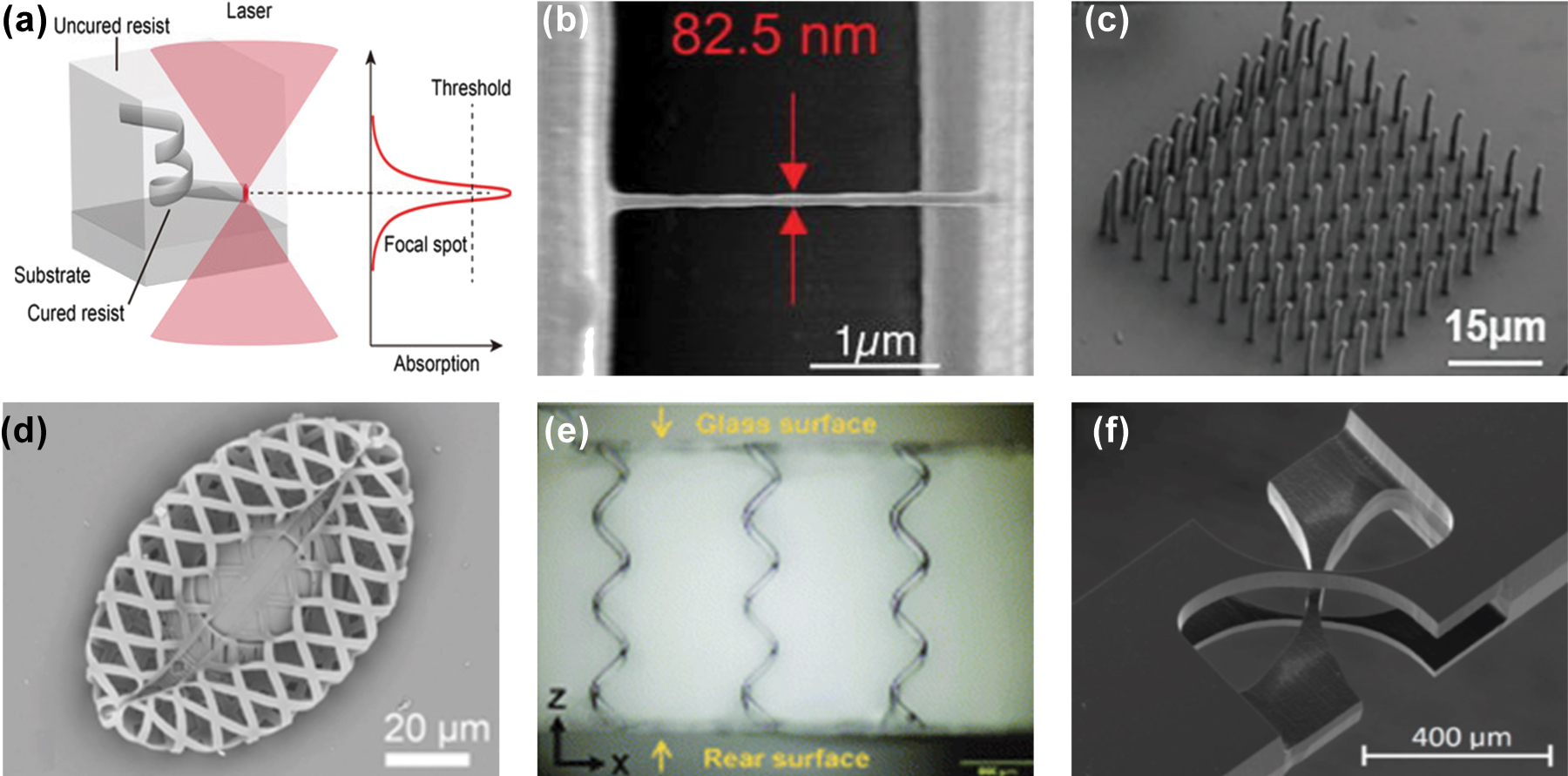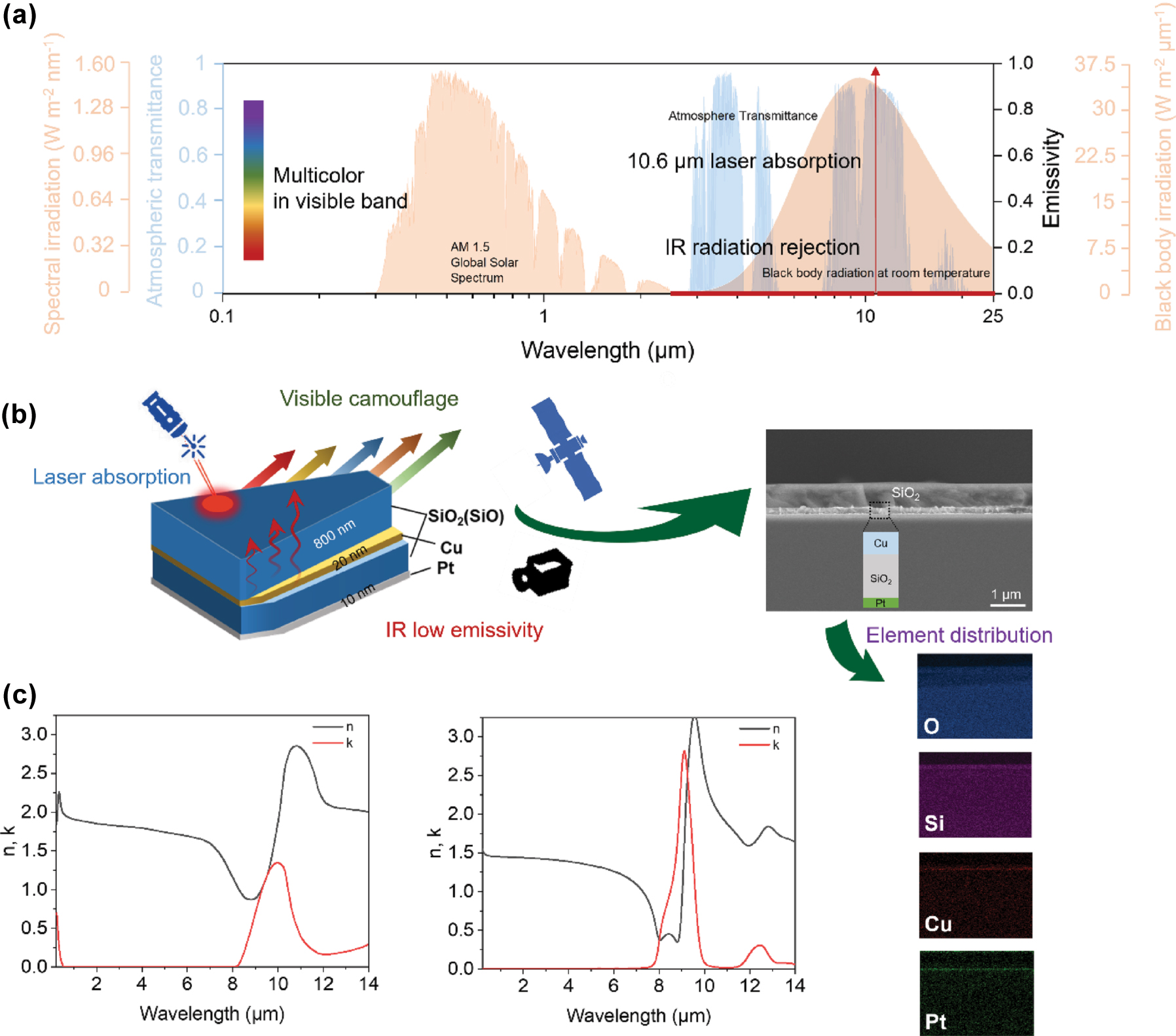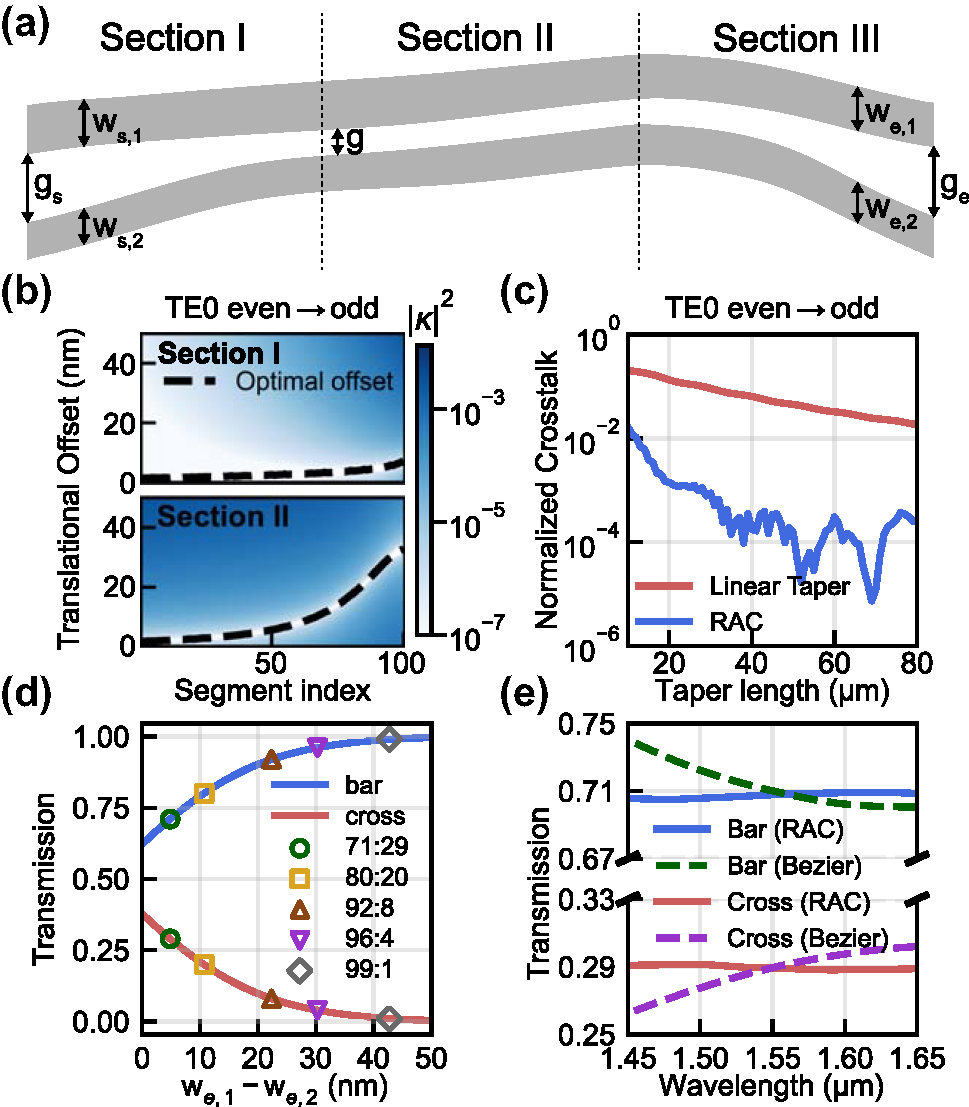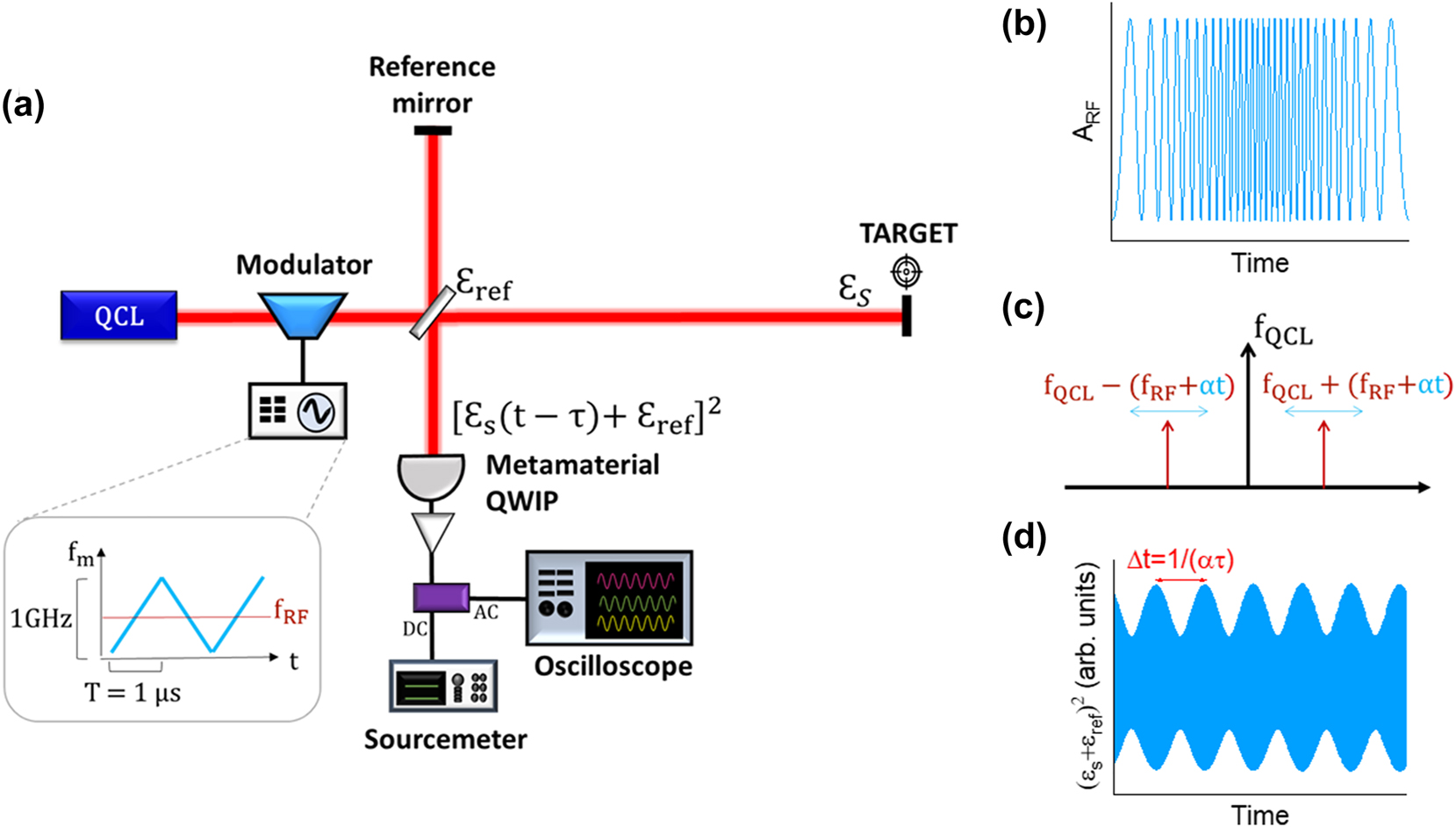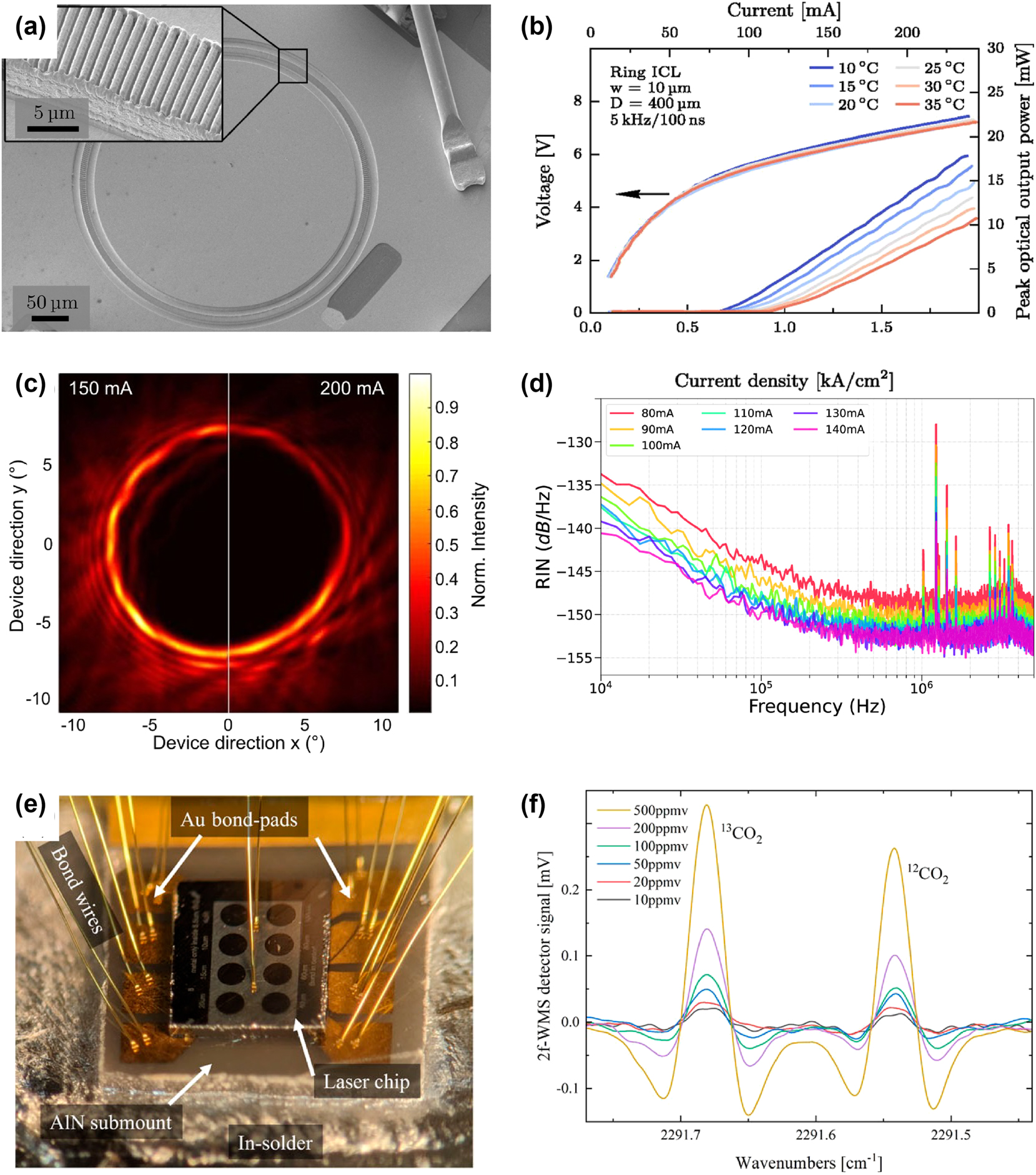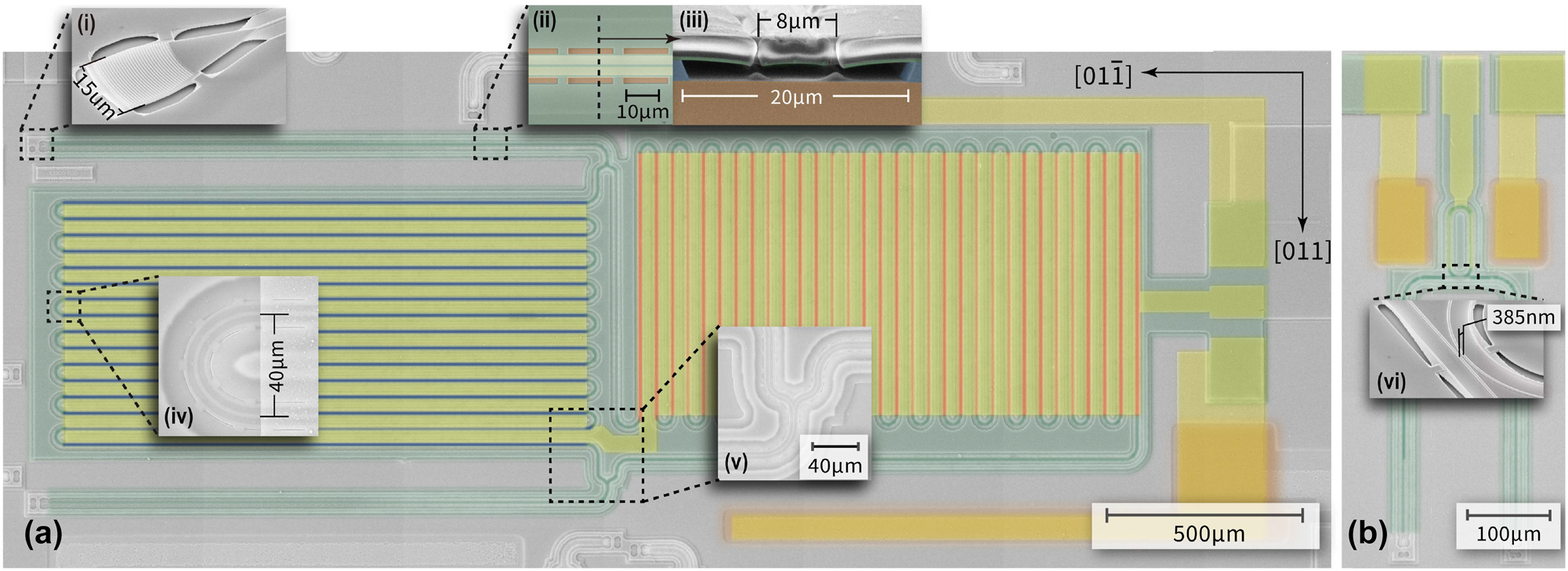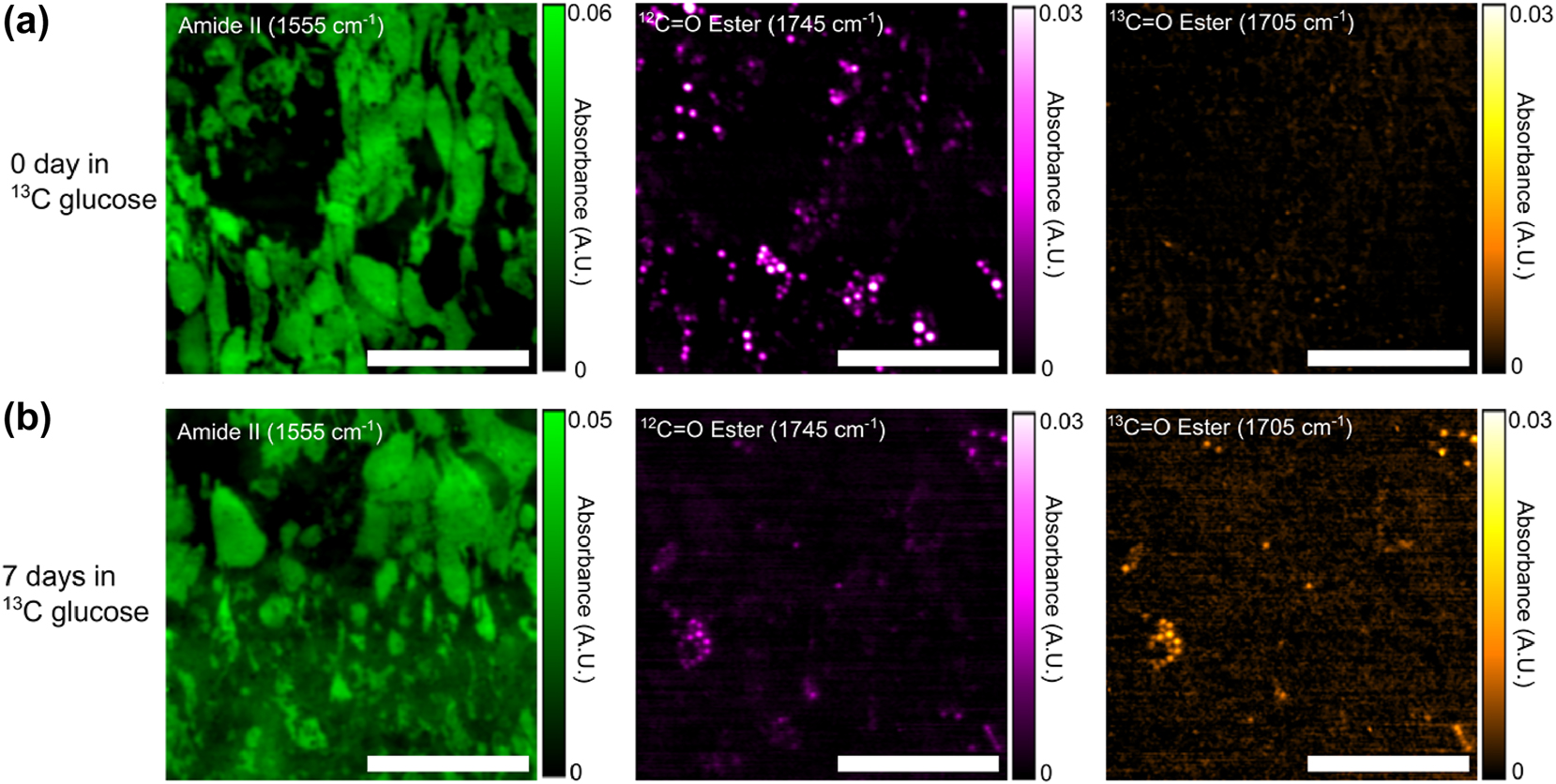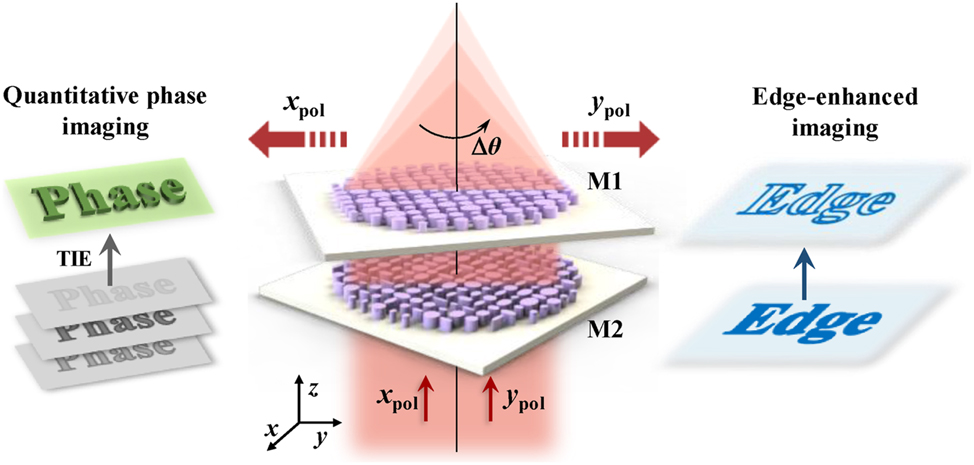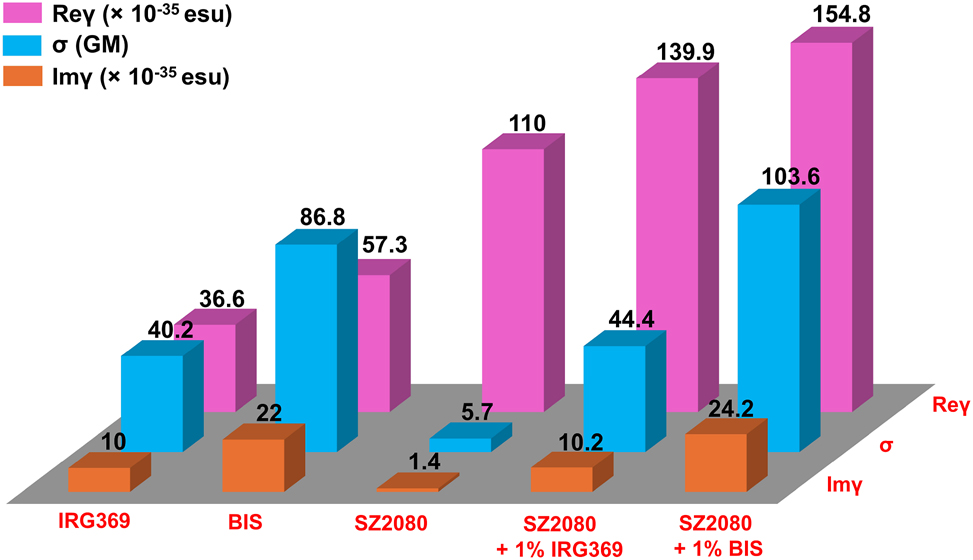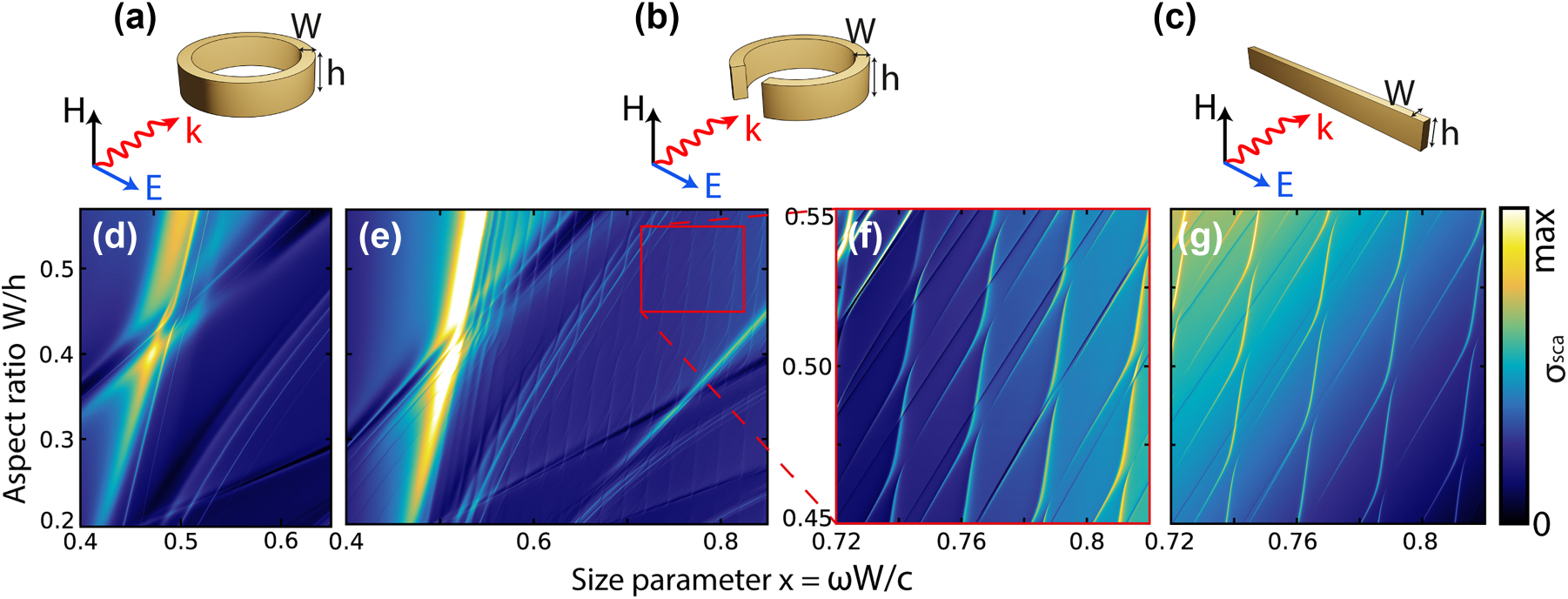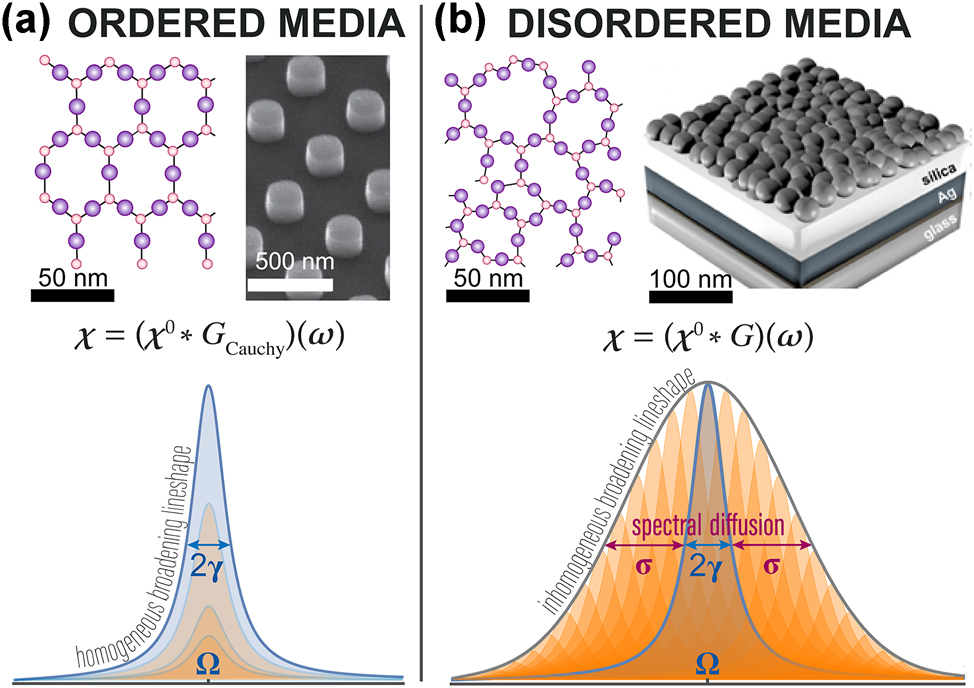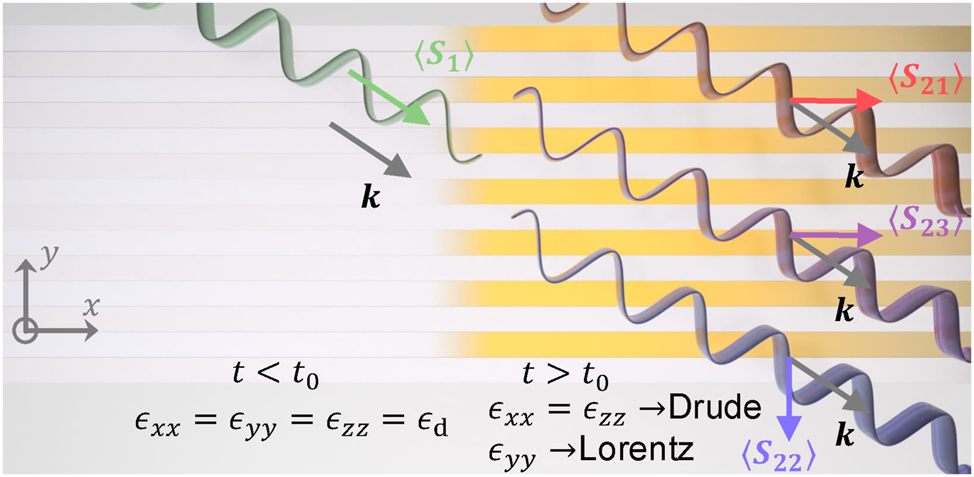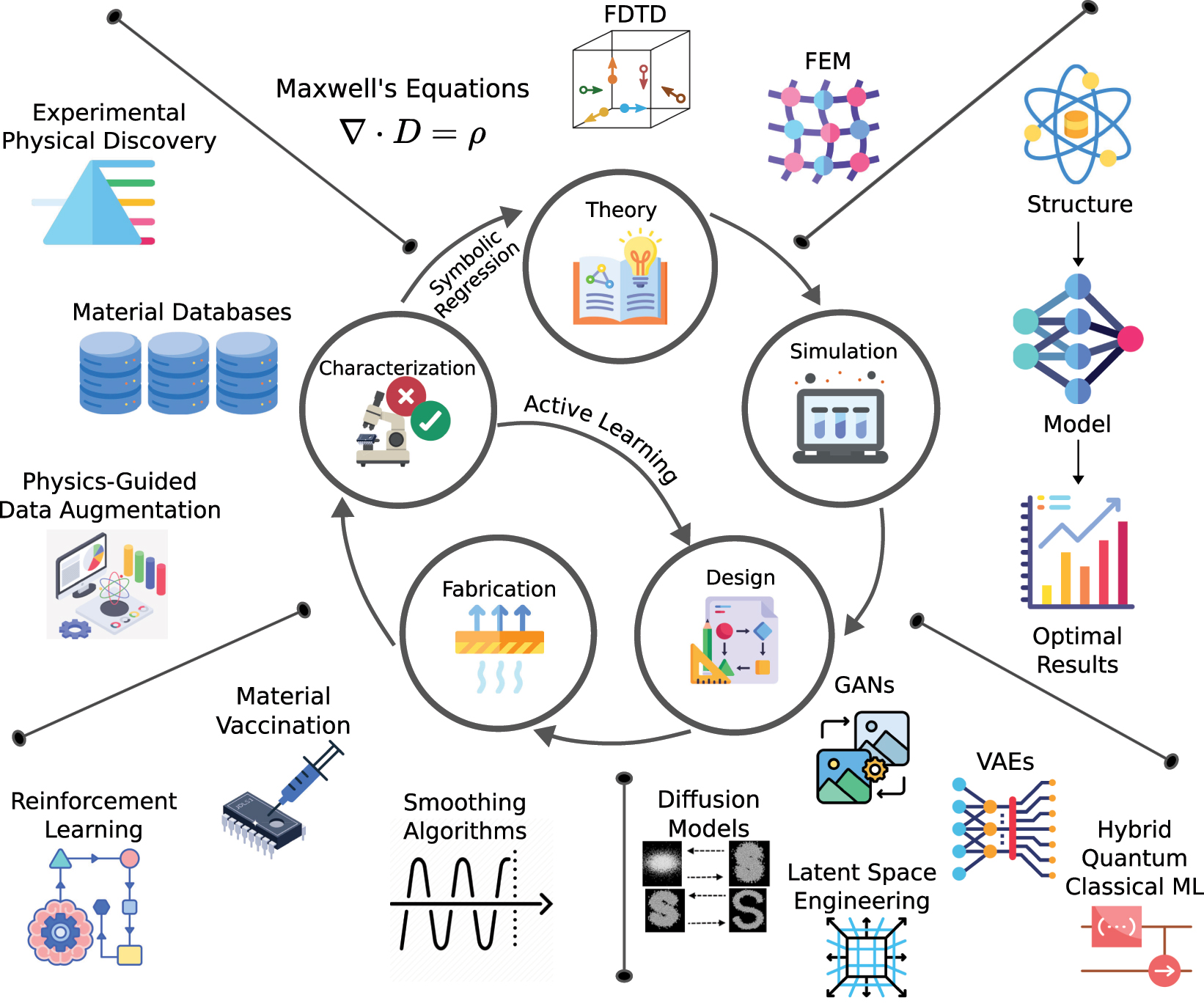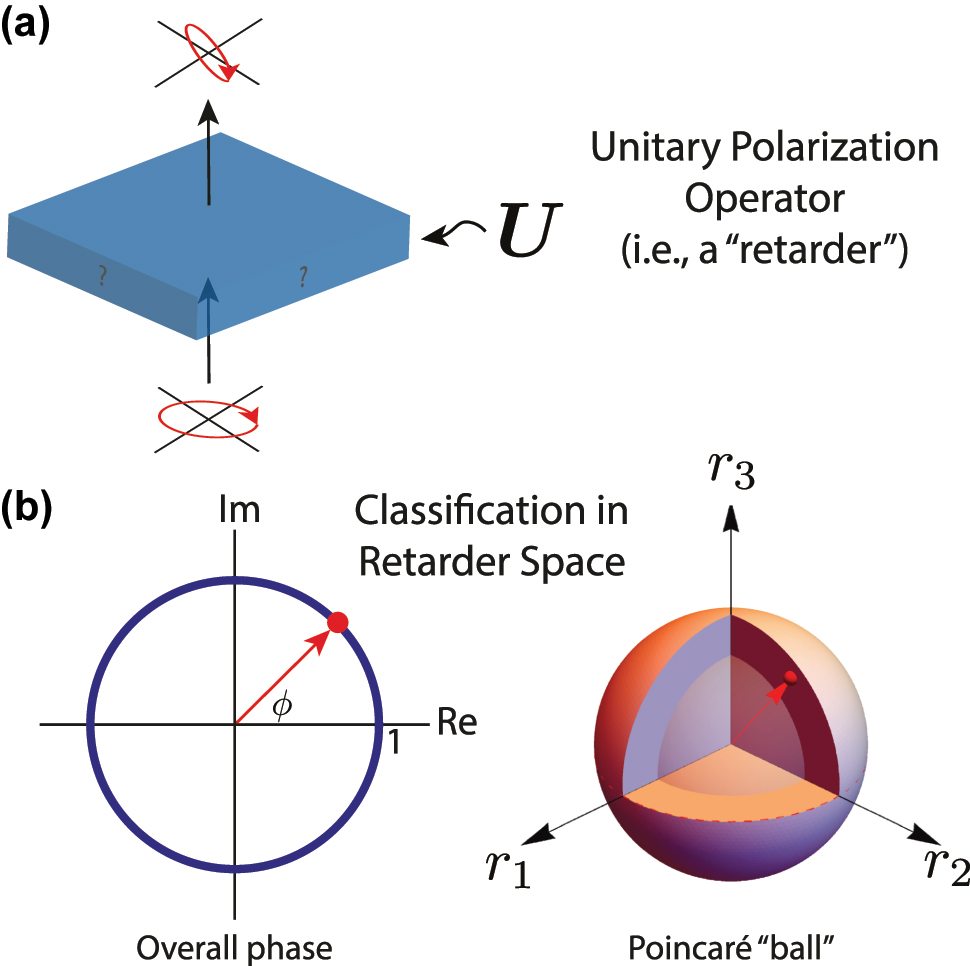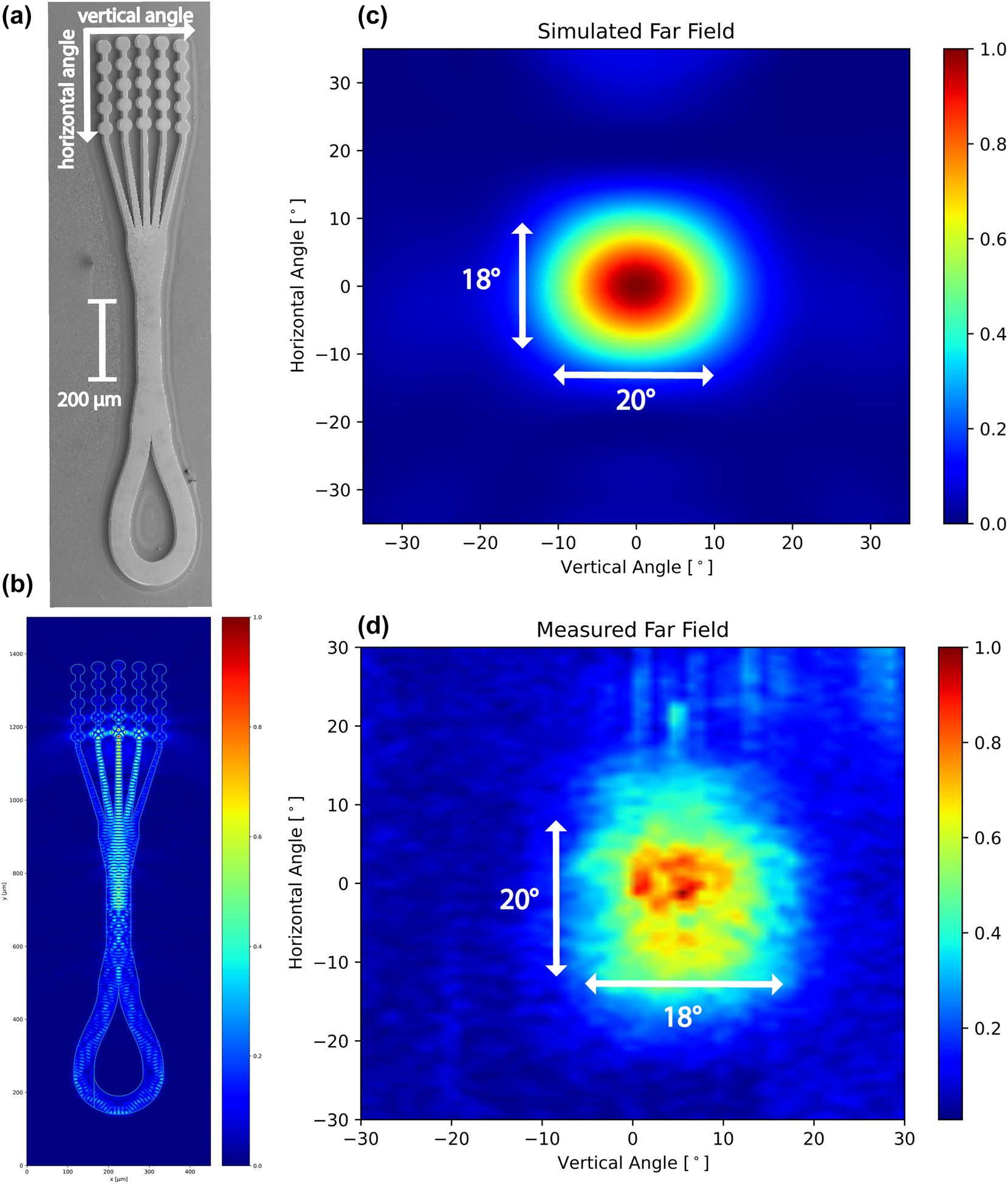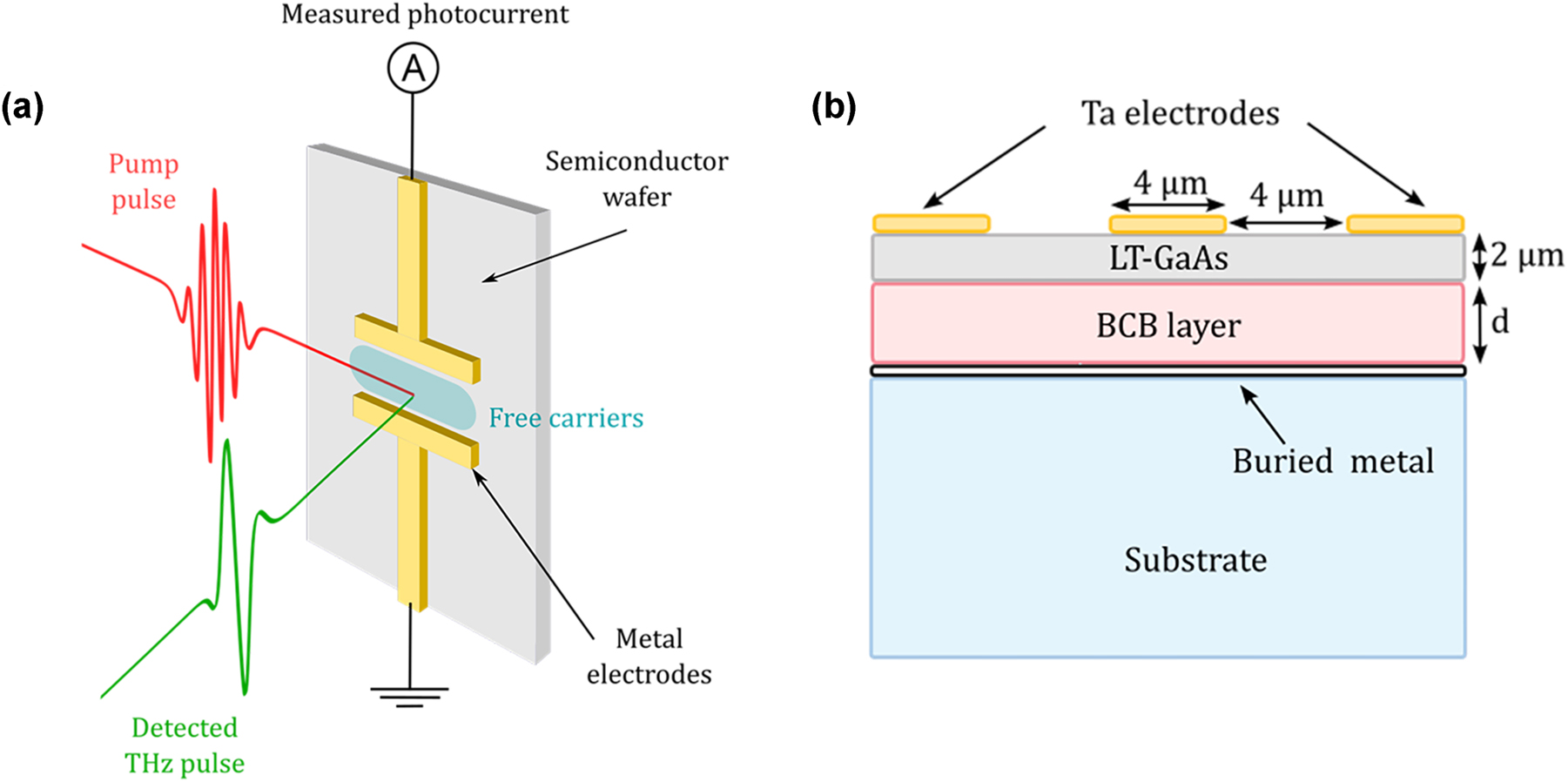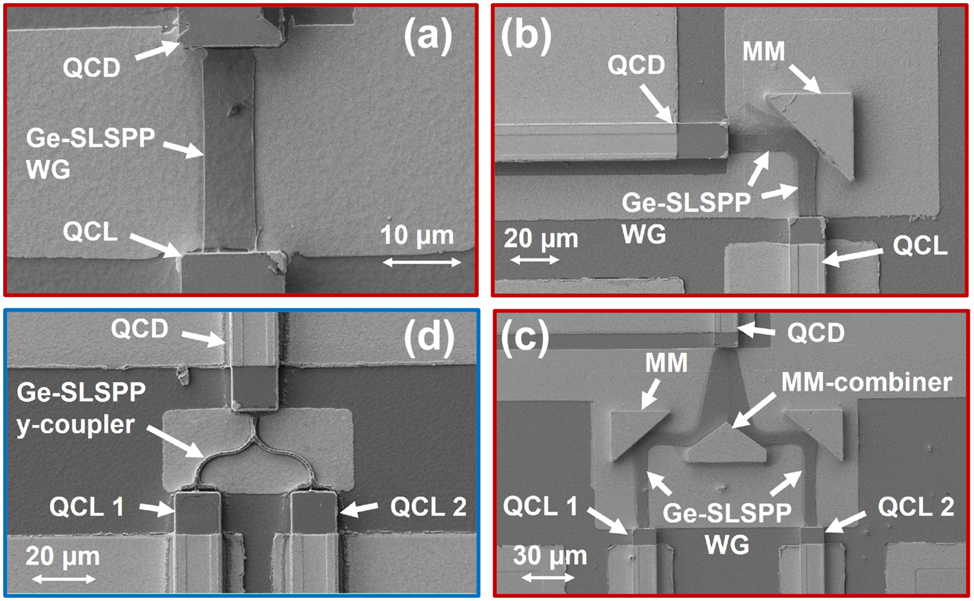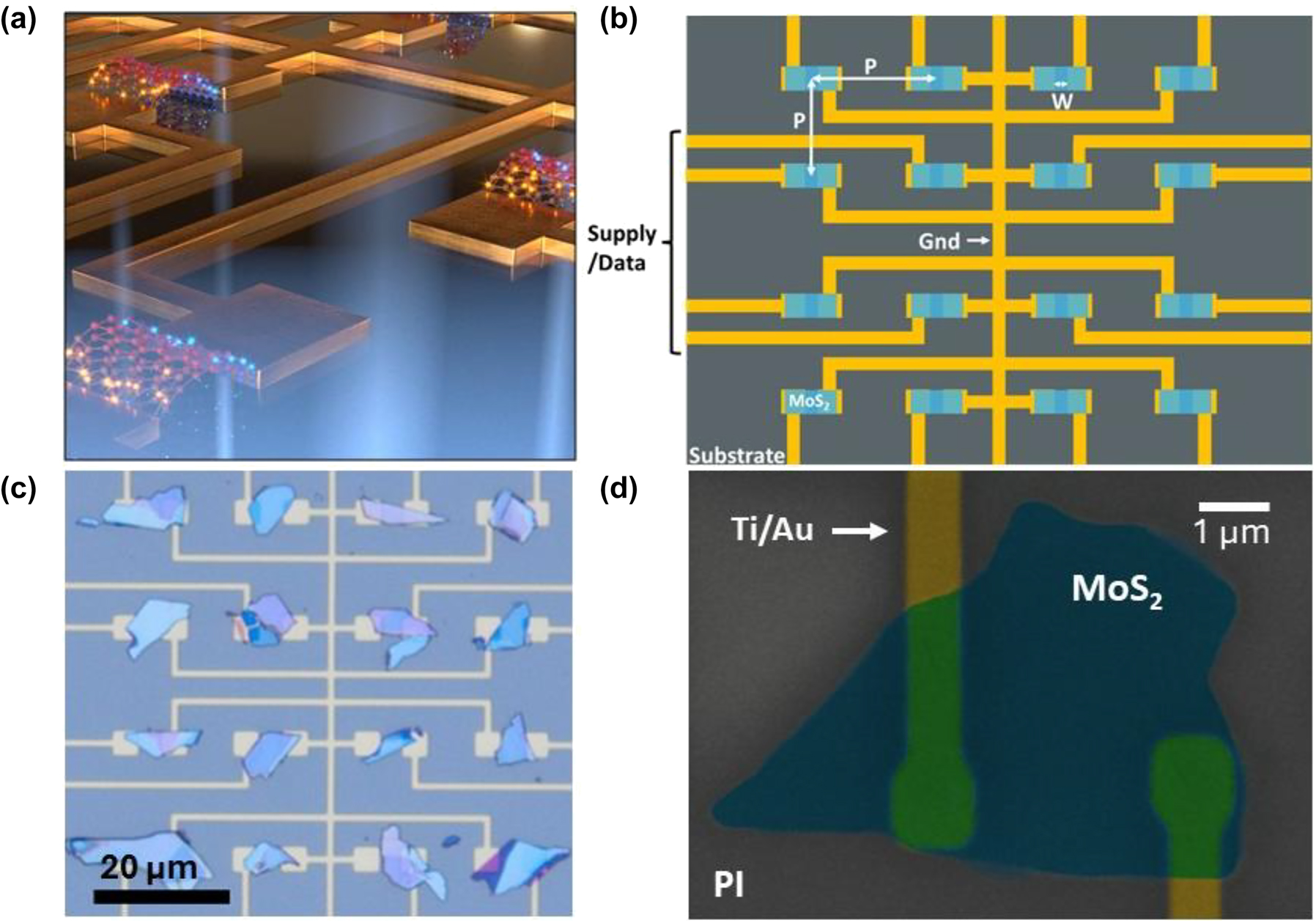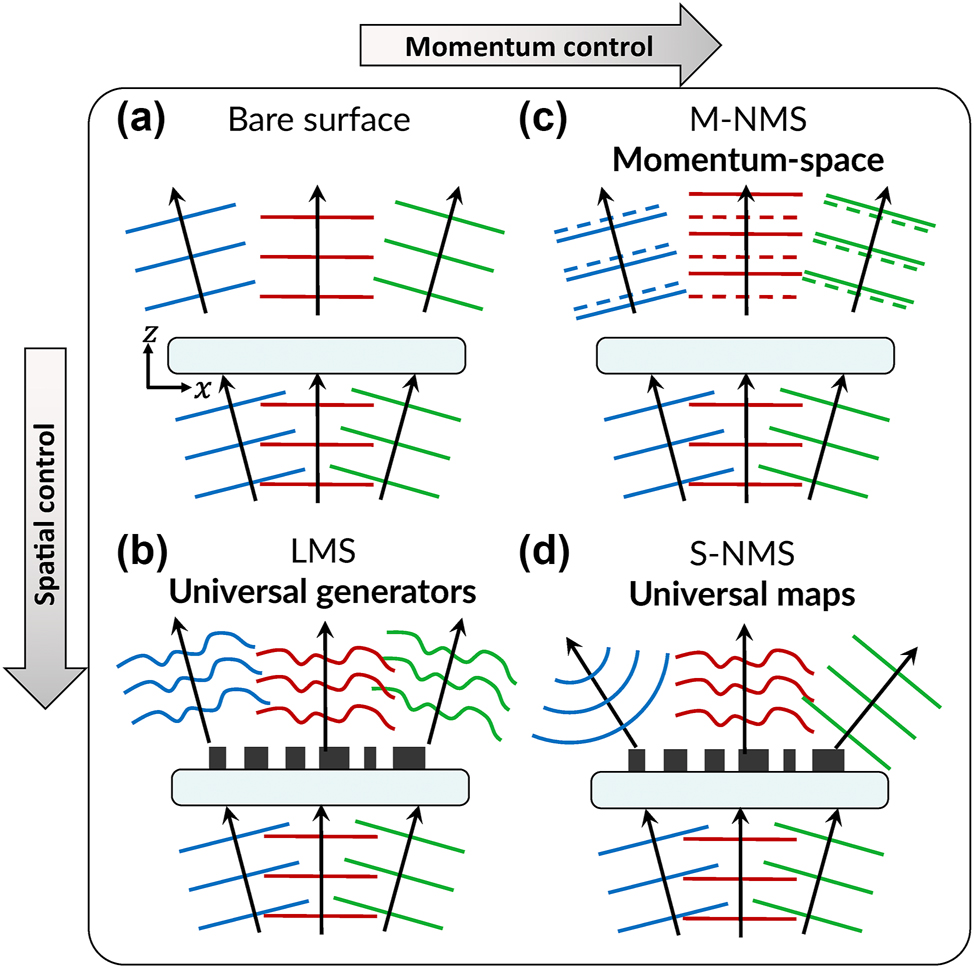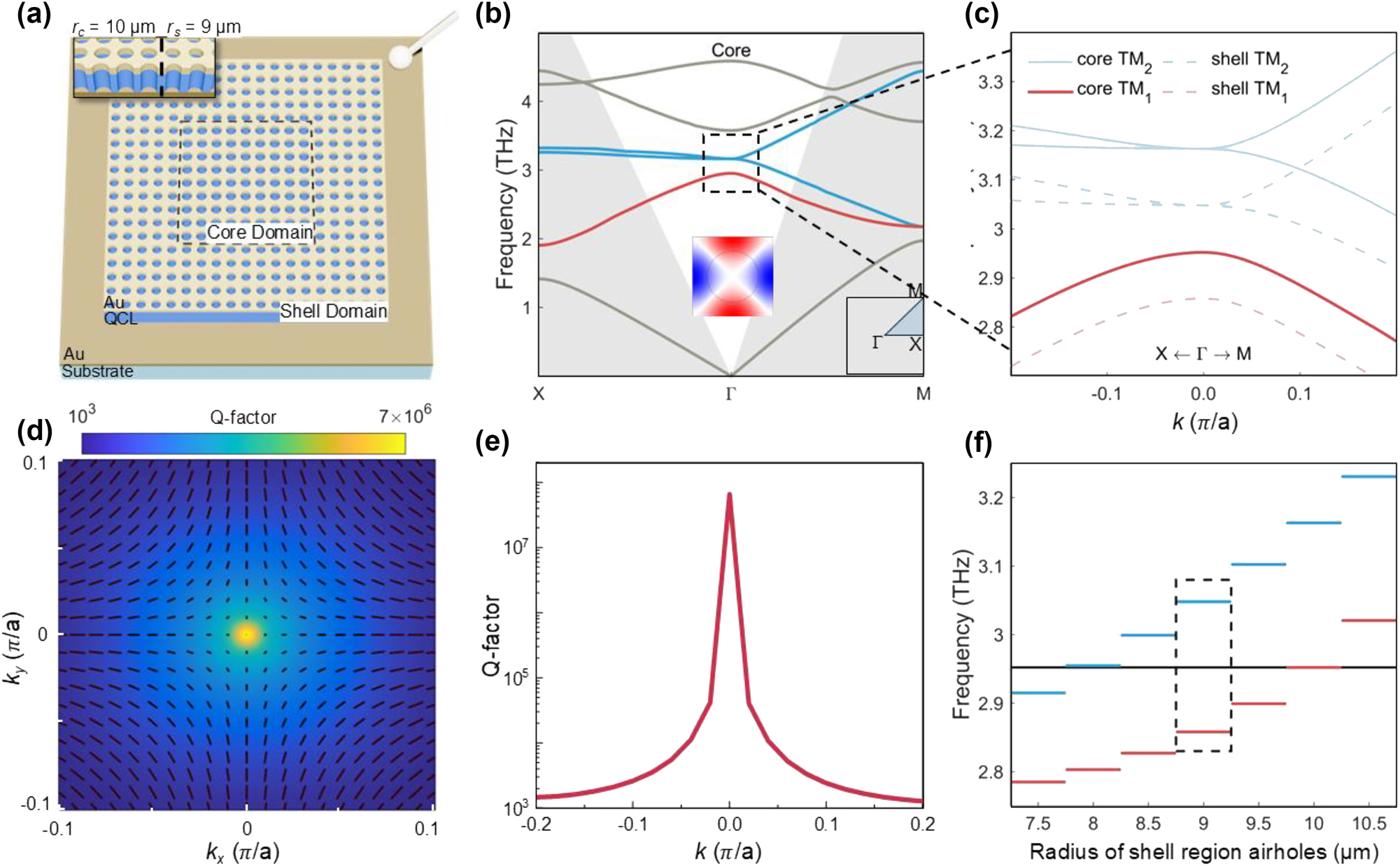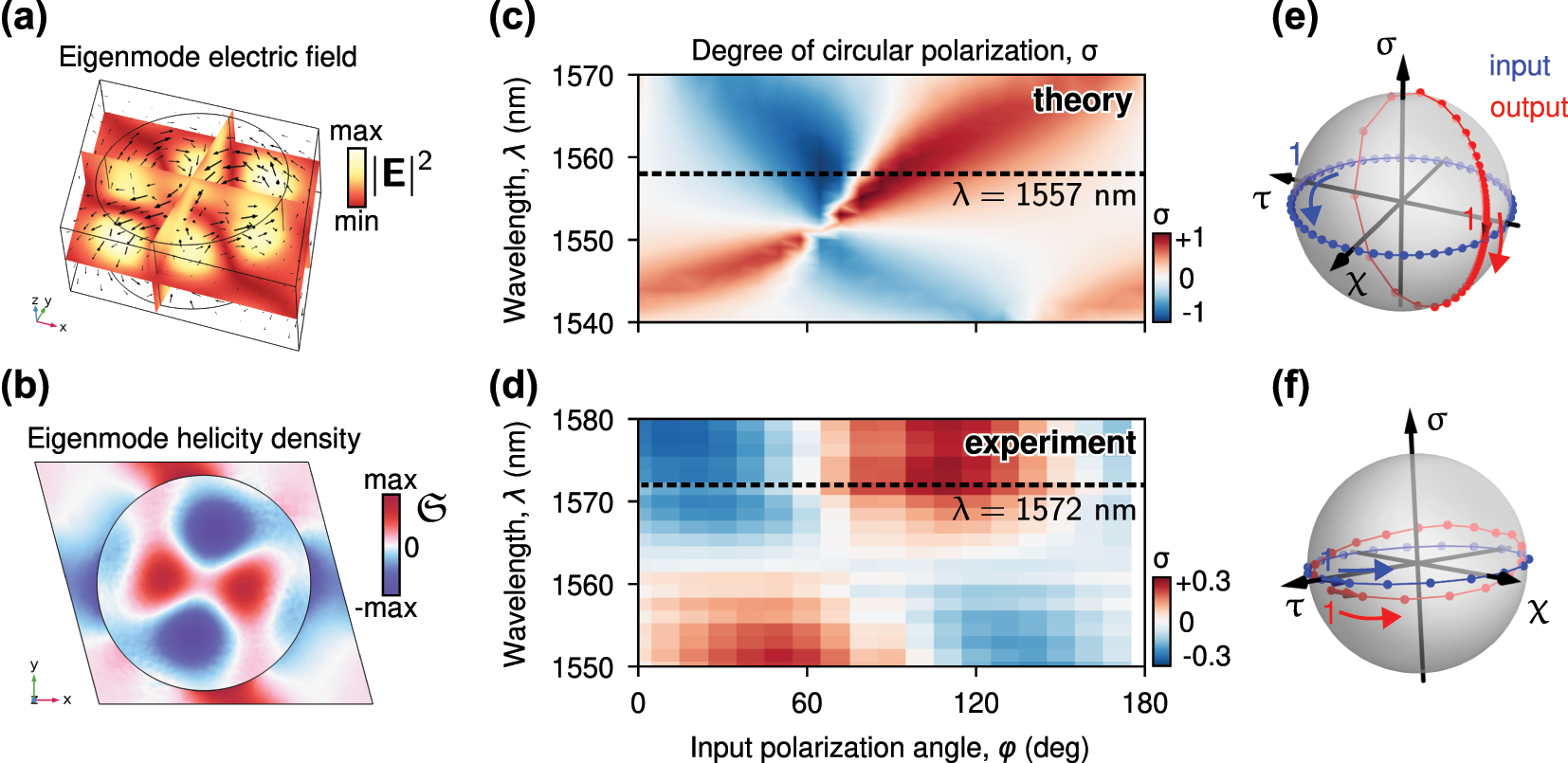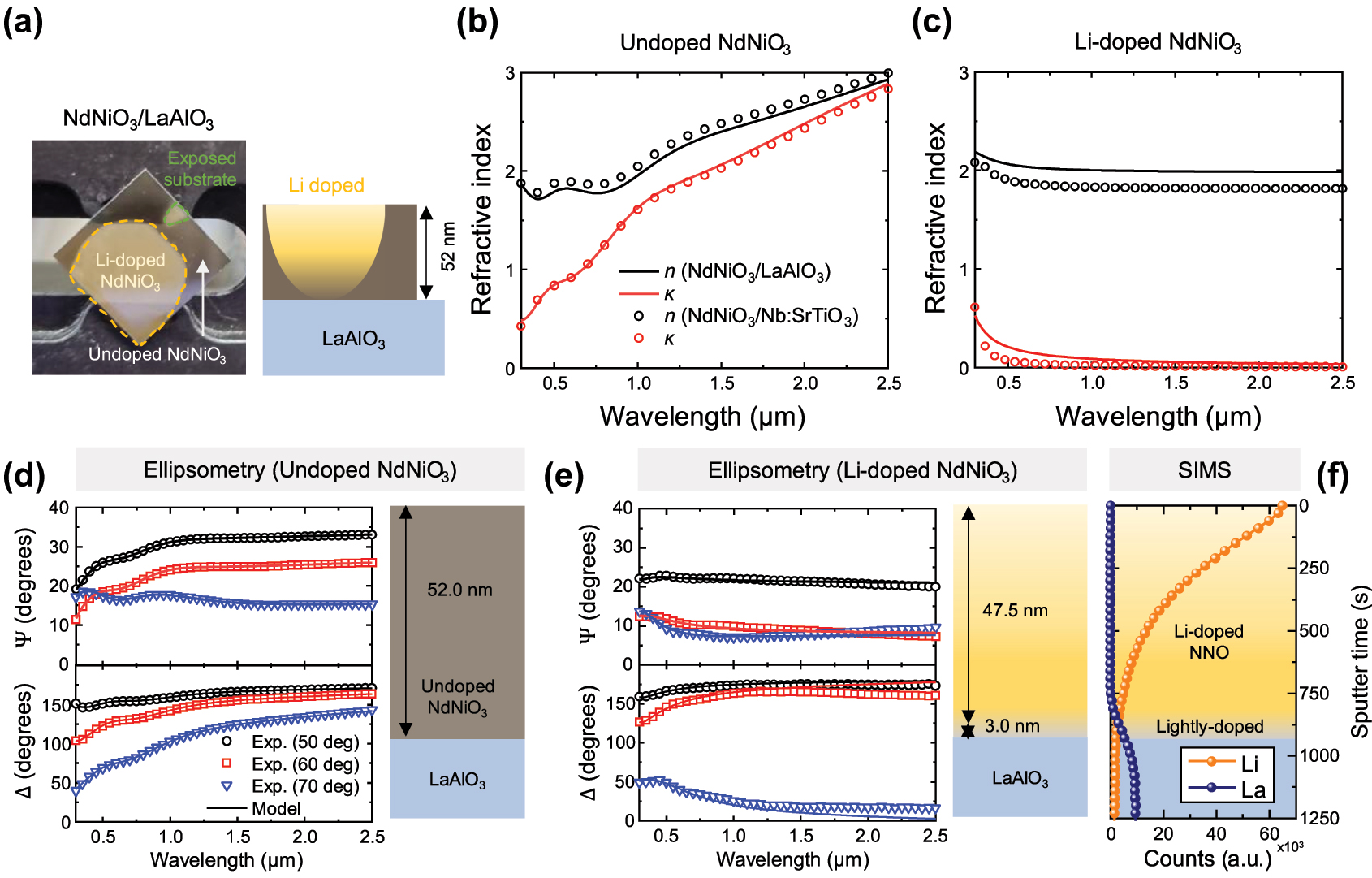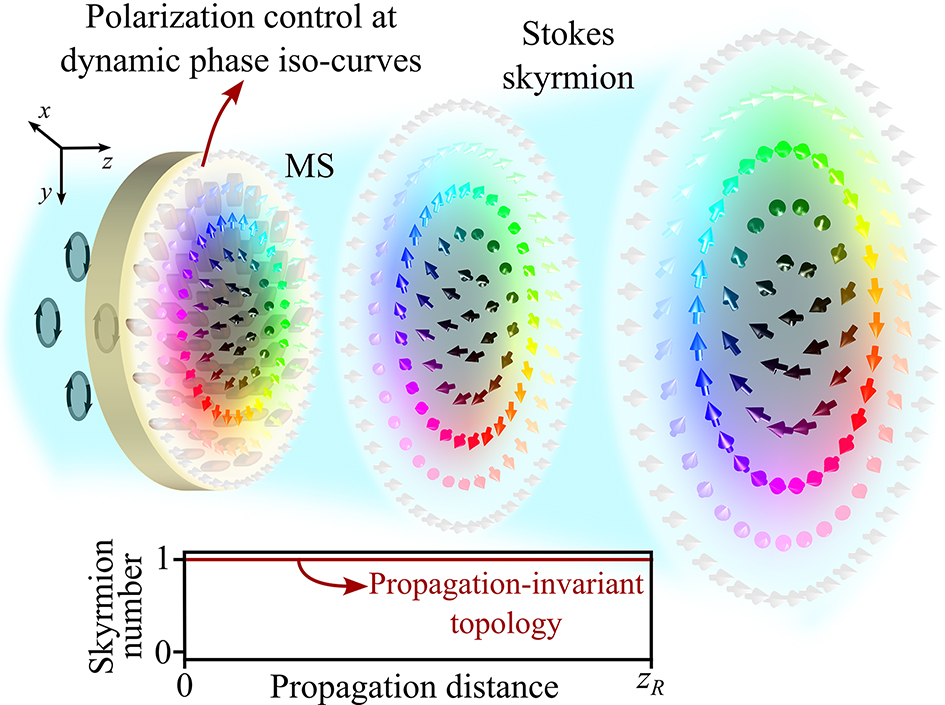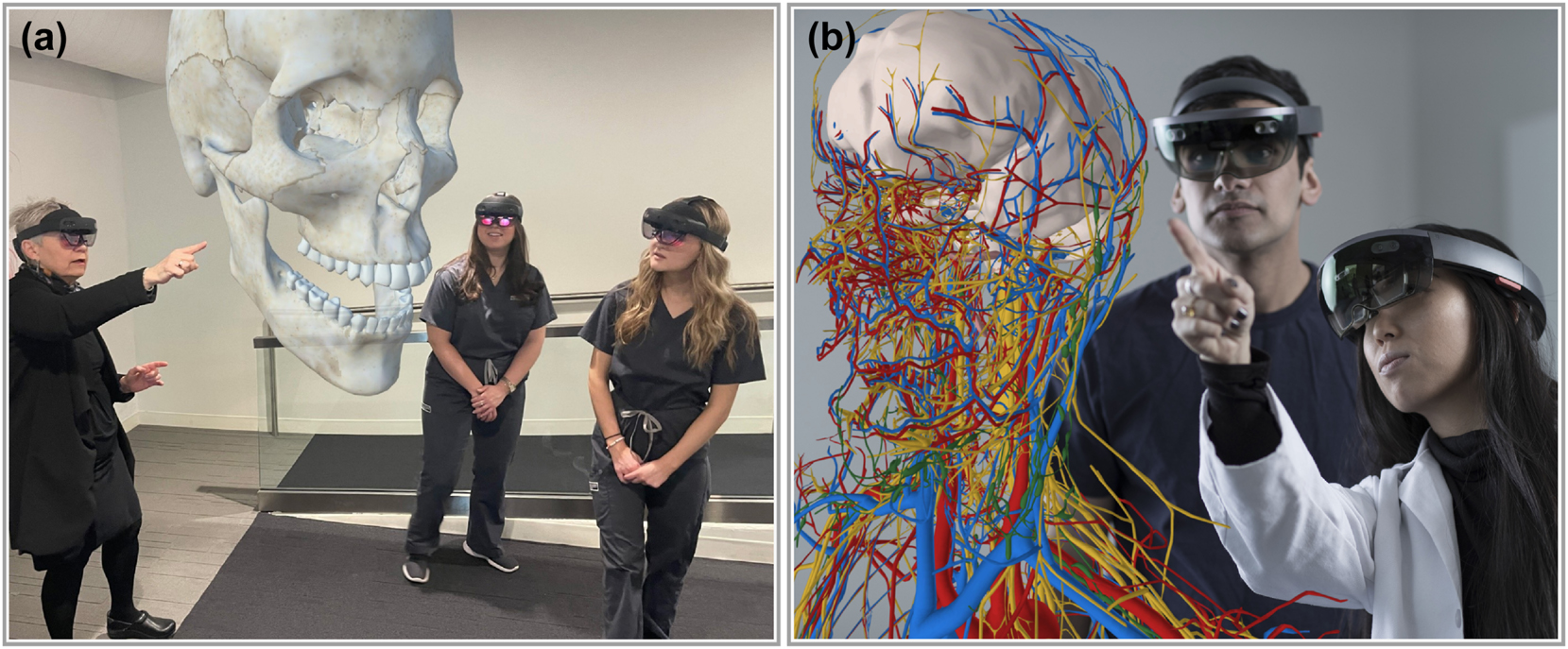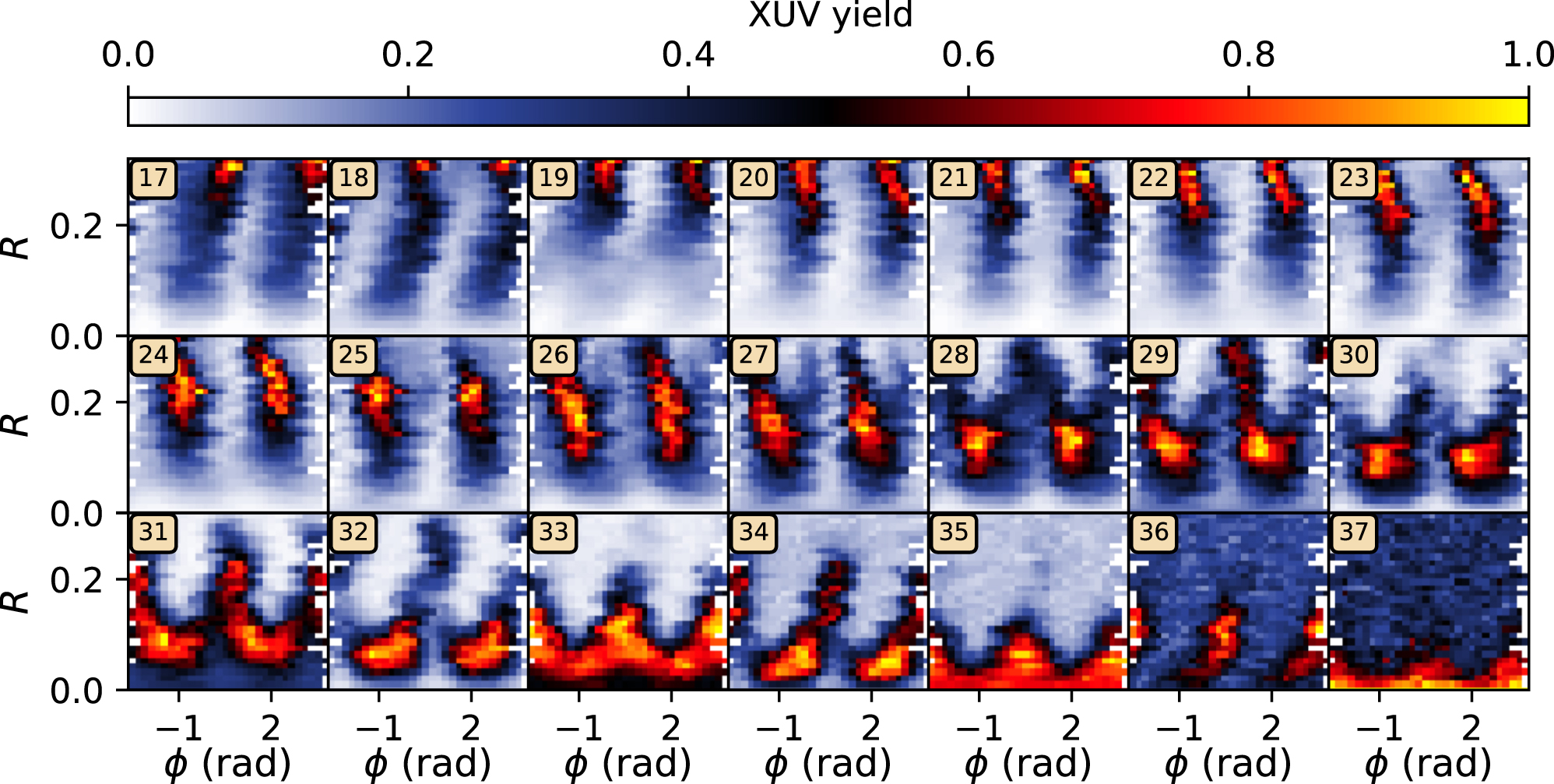Nanophotonics
-
Editor-in-Chief:
Stefan Maier
-
Edited by:
Dennis Couwenberg

About this journal
Nanophotonics covers recent international research results, specific developments in the field and novel applications and is published in partnership with Sciencewise. It belongs to the top journals in the field and publishes research articles, reviews (by invitation only), letters, and perspectives.
Aims and Scope
Nanophotonics focuses on the interaction of photons with nano-structures, such as carbon nano-tubes, nano metal particles, nano crystals, semiconductor nano dots, photonic crystals, tissue and DNA. The journal covers the latest developments for physicists, engineers and material scientists, working in fields related to:
- Plasmonics: metallic nanostructures and their optical properties
- Meta materials, fundamentals and applications
- Nanophotonic concepts and devices for solar energy harvesting and conversion
- Near-field optical microscopy
- Nanowaveguides and devices
- Nano Lasers
- Nanostructures, nanoparticles, nanotubes, nanowires, nanofibers
- Photonic crystals
- Integrated silicon photonics
- Semiconductor quantum dots
- Quantum optics & Quantum information
- Ultrafast and nonlinear pulse propagation in nano materials and structures
- Light-matter interaction, optical manipulation techniques
- Nano-biophotonics
- Optofluidics
- Optomechanics
- System applications based on nanophotonic devices
- Nanofabrication techniques, thin film processing, self-assembly
Your Benefits
As a Nanophotonics author, you will benefit from:
- High impact and high quality – Nanophotonics authors are the leading researchers in the field
- Fast, fair, and constructive peer review
- A continuous publication model and quick online publication of accepted papers (two weeks from acceptance to publication)
- No limitations on colour figures and word count in published articles
- All published articles being freely available worldwide through Open Access
- Extensive promotion of published articles to a global audience
- Retaining copyright as all articles are published with a CC-BY license by default
- Distribution of published articles to open access directories, such as DOAJ, and thousands of libraries worldwide
- Secure archiving by De Gruyter and independent archiving service Portico, meaning your work will be permanently available
---------------------
Publication Metrics
- Average time from submission to initial Editorial Manager assessment: 5 days
- Average time from submission to final decision (all article types): 57 days
- Average time from acceptance to publication: 13 days
---------------------
TOC alerts
Sign up here for regular Table of Contents alerts:
https://marketing.degruyter.com/nanophotonics
Follow us on Twitter: Nanophotonics_J
and WeChat:
Photonics Innovation Award in honor of Federico Capasso
Created to honor the innovative contributions of Federico Capasso to the field of photonics, the Photonics Innovation Award is a new prize of €4,000 from the Nanophotonics journal.
The winners will be announced in June 2025.
---------------------
Early Career Award
Nanophotonics supports young scientists by organizing the annual Early Career Award. This prestigious award acknowledges four early career scientists every year for their accomplishments, giving them recognition for their outstanding work in the field of nanophotonics.
Nominations for the 2025 award open soon.
Visit the award webpage for more information on previous winners, application criteria, and how to submit your nomination.
This award is fully sponsored by Nanophotonics.
---------------------
Highly cited articles:
- Polariton panorama
by D. N. Basov, Ana Asenjo-Garcia, P. James Schuck, Xiaoyang Zhu, Angel Rubio - Ultrasensitive terahertz sensing with high-Q toroidal dipole resonance governed by bound states in the continuum in all-dielectric metasurface
by Yulin Wang, Zhanghua Han, Yong Du, Jianyuan Qin - Non-Hermitian and topological photonics: optics at an exceptional point
by Midya Parto, Yuzhou G. N. Liu, Babak Bahari, Mercedeh Khajavikhan, Demetrios N. Christodoulides - Metasurfaces for biomedical applications: imaging and sensing from a nanophotonics perspective
by Shuyan Zhang, Chi Lok Wong, Shuwen Zeng, Renzhe Bi, Kolvyn Tai, Kishan Dholakia, Malini Olivo - THz spintronic emitters: a review on achievements and future challenges
by Evangelos Th. Papaioannou and René Beigang - Machine learning–assisted global optimization of photonic devices
by Zhaxylyk A. Kudyshev, Alexander V. Kildishev, Vladimir M. Shalaev, Alexandra Boltasseva - Topological photonics: Where do we go from here?
by Mordechai Segev, Miguel A. Bandres - Highly ordered arrays of hat-shaped hierarchical nanostructures with different curvatures for sensitive SERS and plasmon-driven catalysis
by Chao Zhang, Zhaoxiang Li, Si Qiu, Weixi Lu, Mingrui Shao, Chang Ji, Guangcan Wang, Xiaofei Zhao, Jing Yu and Zhen Li - Review on fractional vortex beam
by Hao Zhang, Jun Zeng, Xingyuan Lu, Zhuoyi Wang, Chengliang Zhao and Yangjian Cai - Orbital angular momentum and beyond in free-space optical communications
by Jian Wang, Jun Liu, Shuhui Li, Yifan Zhao, Jing Du and Long Zhu
---------------------
Article Processing Charges
To sustain the production of our fully refereed open access journal, each article accepted for publication in Nanophotonics is subject to an article processing charge of 2,650. This fee is used to cover the costs of the peer review process, professional typesetting, and copyediting, as well as online hosting, long-term preservation and extensive promotion to potential readers.
Information regarding payment of these charges will be provided following article acceptance. Enquiries concerning article processing charges should be addressed to the Publishing Editor. More information can be found in the Article Processing Charges policy document.
---------------------
Publication Ethics and Editorial Policies
Information on De Gruyter's Publishing Ethics can be found here. For further information on publication ethics, please refer to COPE’s guidelines.
Guidelines for Author and Ethics Statements can be found in the Submit tab or downloaded from the Supplementary Materials below.
-
Open AccessStructural-color-enabled multispectral heterostructure for infrared and laser camouflageSeptember 4, 2025
-
September 4, 2025
-
Open AccessEnhancement of second-harmonic generation through Brillouin zone folding in a waveguide-coupled metasurfaceSeptember 3, 2025
-
Open AccessRapid adiabatic couplers with arbitrary split ratios for broadband DWDM interleaver applicationSeptember 1, 2025
-
September 1, 2025
-
August 29, 2025
-
Open AccessSurface-emitting ring quantum cascade lasersAugust 28, 2025
-
August 28, 2025
-
August 28, 2025
-
August 28, 2025
-
Open AccessExciton–polariton condensation in MAPbI3 films from bound states in the continuum metasurfacesAugust 27, 2025
-
August 6, 2025
-
Open AccessCascades of quasi-bound states in the continuumAugust 5, 2025
-
Open AccessInhomogeneous broadening in the time domainAugust 5, 2025
-
August 5, 2025
-
Open AccessSelf-accelerating topological edge statesAugust 4, 2025
-
Open AccessMeasurement of the cavity dispersion in quantum cascade lasers using subthreshold luminescenceAugust 1, 2025
-
Open AccessFrom far-infrared detectors to THz QCLsJuly 28, 2025
-
July 4, 2025
-
June 30, 2025
-
Open AccessCompact, thermoelectrically cooled surface emitting THz QCLs operating in an HHL housingJune 30, 2025
-
June 20, 2025
-
June 17, 2025
-
June 13, 2025
-
June 9, 2025
-
Open AccessEffective discrete-level density matrix model for unipolar quantum optoelectronic devicesJune 5, 2025
-
June 5, 2025
-
May 26, 2025
-
Open AccessNonlocal metasurfaces: universal modal maps governed by a nonlocal generalized Snell’s lawMay 22, 2025
-
May 22, 2025
-
Open AccessPolaritonic quantum matterMay 6, 2025
-
May 5, 2025
-
Open AccessThe theory of the quantum walk comb laserMay 5, 2025
-
Open AccessSupershift properties for nonanalytic signalsApril 30, 2025
-
April 28, 2025
-
April 25, 2025
-
April 24, 2025
-
April 24, 2025
-
Open AccessNon-linear bistability in pulsed optical trapsApril 24, 2025
-
April 23, 2025
-
April 21, 2025
-
Open AccessTailoring optical response of MXene thin filmsApril 3, 2025
-
March 28, 2025
-
March 21, 2025
-
March 20, 2025
-
Open AccessTailoring propagation-invariant topology of optical skyrmions with dielectric metasurfacesMarch 13, 2025
-
March 11, 2025
-
March 10, 2025
-
March 7, 2025
-
February 17, 2025
-
February 14, 2025
-
Open AccessOn the generalized Snell–Descartes laws, shock waves, water wakes, and Cherenkov radiationJanuary 17, 2025
-
January 16, 2025
-
January 16, 2025
-
Open AccessSpace-time wedgesJanuary 7, 2025
-
October 31, 2024
-
Issue 17
-
Issue 16Special Issue: Guided Nonlinear Optics for Information Processing
-
Issue 15
-
Issue 14
-
Issue 13
-
Issue 12
-
Issue 11Special Issue: Quantum Light: Creation, Integration, and Applications
-
Issue 10Special Issue: Emerging phenomena in nanophotonics
-
Issue 9
-
Issue 8Special Issue: Metamaterials and Plasmonics in Asia
-
Issue 7
-
Issue 6Special Issue: Spatiotemporal Optical Fields
-
Issue 5
-
Issue 4
-
Issue 3
-
Issue 2
-
Issue 1
-
Issue 26
-
Issue 25Special Issue: Current Trends in Nanophotonics
-
Issue 24
-
Issue 23
-
Issue 22
-
Issue 21
-
Issue 20
-
Issue 19
-
Issue 18Special Issue: New Frontiers in Nonlinear Nanophotonics
-
Issue 17
-
Issue 16
-
Issue 15
-
Issue 14Special Issue: Strong Coupling of Organic Molecules
-
Issue 13
-
Issue 12Special Issue: Programmable Nano-optics and Photonics
-
Issue 11Special Issue: Nanophotonics out of Equilibrium
-
Issue 10Special Issue: Infrared and Terahertz Quantum Technologies
-
Issue 9
-
Issue 8Special Issue: Metamaterials and Plasmonics in Asia
-
Issue 7Special Issue: New Frontiers of Nanophotonics through Metamaterials, Photonic Crystals, and Plasmonics
-
Issue 6
-
Issue 5Special Issue: Thermal Photonics for Sustainability
-
Issue 4
-
Issue 3
-
Issue 2
-
Issue 1
-
Issue 24
-
Issue 23
-
Issue 22
-
Issue 21
-
Issue 20
-
Issue 19
-
Issue 18
-
Issue 17
-
Issue 16
-
Issue 15
-
Issue 14Special Issue: Nanophotonics in support of Ukrainian Scientists
-
Issue 13Special Issue: Metamaterials and plasmonics in Asia, a tribute to Byoungho Lee
-
Issue 12
-
Issue 11
-
Issue 10
-
Issue 9
-
Issue 8Special Issue: Nanofabrication
-
Issue 7
-
Issue 6
-
Issue 5Special Issue: Neural network learning with photonics and for photonic circuit design
-
Issue 4
-
Issue 3Special Issue: Quantum Nanophotonics
-
Issue 2
-
Issue 1
-
Issue 22Special Issue: Novel Two-Dimensional Materials Based Bio-Nanophotonic
-
Issue 21
-
Issue 20
-
Issue 19
-
Issue 18
-
Issue 17Special Issue: Tunable Nanophotonics
-
Issue 16
-
Issue 15
-
Issue 14
-
Issue 13
-
Issue 12
-
Issue 11Special Issue: New Trends in Nanophotonics and Advanced Photonic Materials
-
Issue 10
-
Issue 9Special Issue: Metamaterials and Plasmonics in Asia
-
Issue 8
-
Issue 7
-
Issue 6
-
Issue 5
-
Issue 4Special Issue: Photonic Angular Momentum
-
Issue 3
-
Issue 2
-
Issue 1
-
Issue 18
-
Issue 17Special Issue: Nonradiating photonics with resonant dielectric nanostructures
-
Issue 16
-
Issue 15
-
Issue 14Special Issue: Honorary Issue for Mark Stockman
-
Issue 13
-
Issue 12Special Issue: Nanophotonics and immunotherapy for cancer; Guest Editors: Feifan Zhou, Tayyaba Hasan, Celine Frochot, Wei R. Chen
-
Issue 11
-
Issue 10
-
Issue 9
-
Issue 8Special Issue: Photonics for Enhanced Perovskite Optoelectronics; Guest Editors: Hairen Tan, Li Na Quan and Michael Saliba
-
Issue 7
-
Issue 6
-
Issue 5
-
Issue 4
-
Issue 3
-
Issue 2
-
Issue 1Special Issue: Frontiers of Optics and Photonics; Guest Editors: Federico Capasso and Dennis Couwenberg
-
Issue 16
-
Issue 15
-
Issue 14
-
Issue 13Special Issue: Photonics for Computing and Computing for Photonics, Guest Editors: Daniel Brunner, Aydogan Ozcan, Alireza Marandi, Wim Bogaerts
-
Issue 12Special Issue: Interdisciplinary Nanophotonics; Guest Editors: Hatice Altug, Laura Na Liu
-
Issue 11
-
Issue 10Special Issue: Metamaterials and Plasmonics in Asia; Guest Editors: Jeong Weon Wu, Teruya Ishihara, Lei Zhou, Cheng-Wei Qiu
-
Issue 9
-
Issue 8Special Issue: 2D materials for nanophotonics: from fundamentals to applications, II. Applications; Guest Editors: Xiantao Jiang, Meng Zhang, Xi Ling, Pablo Alonso González, Han Zhang
-
Issue 7Special Issue: 2D materials for nanophotonics: from fundamentals to applications, I. Fundamentals; Guest Editors: Xiantao Jiang, Meng Zhang, Xi Ling, Pablo Alonso González, Han Zhang
-
Issue 6
-
Issue 5Special Issue: New trends in nanophotonics; Guest Editors: Sunae So, Namkyoo Park, Hak Joo Lee, Junsuk Rho
-
Issue 4
-
Issue 3
-
Issue 2Special Issue: Proceedings of Surface Plasmon Photonics Conference (SPP9); Guest Editors: N. Asger Mortensen, Pierre Berini, Uriel Levy, Sergey Bozhevolnyi
-
Issue 1
-
Issue 12
-
Issue 11Special Issue: Quantum Nanophotonics in Emerging Materials; Guest Editors: A. Alkauskas, L. C. Bassett; A. L. Exarhos; Kai-Mei Fu
-
Issue 10
-
Issue 9Special Issue: Interdisciplinary Nanophotonics; Guest Editors: E. Di Fabrizio and M. Stockman
-
Issue 8Special Issue: Topological Nanophotonics; Guest Editors: Niels Asger Mortensen, Sergey I. Bozhevolnyi, Andrea Alù
-
Issue 7
-
Issue 6
-
Issue 5
-
Issue 4Special Issue: Plasmon-Exciton Coupling; Guest Editors: Matthew Pelton, Matthew Sheldon, and Jacob Khurgin
-
Issue 3
-
Issue 2
-
Issue 1
-
Issue 12
-
Issue 11
-
Issue 10
-
Issue 9
-
Issue 8
-
Issue 7
-
Issue 6Honorary issue for Federico Capasso on “Metamaterials & Metasurfaces”
-
Issue 5
-
Issue 4
-
Issue 3
-
Issue 2
-
Issue 1
-
Issue 6Special Issue: 2D Materials
-
Issue 5
-
Issue 4Special Issue: Optical Bio Sensors
-
Issue 3Special Issue: Optical Computing
-
Issue 2
-
Issue 1
-
Issue 4
-
Issue 3Special Issue: Quantum Photonics
-
Issue 2Special Issue: Frequency Comb Generation
-
Issue 1Special Issue: Smart Nanophotonics for Renewable Energy and Sustainability / Guest Editors: Alexander V. Kildishev, Svetlana Boriskina and Vivian Ferry
-
Issue 4
-
Issue 3
-
Issue 2Special Issue: Emerging Materials for Nanophotonics / Guest Editors: Jenifer Dionne, Alexandra Boltasseva and Luke Sweatlock
-
Issue 1
-
Issue 6
-
Issue 4-5Special issue: Silicon Photonic Integrated Devices / Guest Editors: Chris Doerr, Haisheng Rong and Michal Lipson
-
Issue 3
-
Issue 1-2Special Issue: Near-field Optics: Generality in Super-Resolution Imaging in 3D \ Guest Editor: Aaron Lewis
-
Volume 14 | Issue 16 Special Issue: Guided Nonlinear Optics for Information Processing
-
Volume 14 | Issue 11 Special Issue: Quantum Light: Creation, Integration, and Applications
-
Volume 14 | Issue 10 Special Issue: Emerging phenomena in nanophotonics
-
Volume 14 | Issue 8 Special Issue: Metamaterials and Plasmonics in Asia
-
Volume 14 | Issue 6 Special Issue: Spatiotemporal Optical Fields
-
Volume 13 | Issue 25 Special Issue: Current Trends in Nanophotonics
-
Volume 13 | Issue 18 Special Issue: New Frontiers in Nonlinear Nanophotonics
-
Volume 13 | Issue 14 Special Issue: Strong Coupling of Organic Molecules
-
Volume 13 | Issue 12 Special Issue: Programmable Nano-optics and Photonics
-
Volume 13 | Issue 11 Special Issue: Nanophotonics out of Equilibrium
-
Volume 13 | Issue 10 Special Issue: Infrared and Terahertz Quantum Technologies
-
Volume 13 | Issue 8 Special Issue: Metamaterials and Plasmonics in Asia
-
Volume 13 | Issue 7 Special Issue: New Frontiers of Nanophotonics through Metamaterials, Photonic Crystals, and Plasmonics
-
Volume 13 | Issue 5 Special Issue: Thermal Photonics for Sustainability
| Journal Impact Factor | 6.6 | 2024, Journal Citation Reports (Clarivate, 2025) |
| 5-year Journal Impact Factor | 7.3 | 2024, Journal Citation Reports (Clarivate, 2025) |
| Journal Citation Indicator | 1.13 | 2024, Journal Citation Reports (Clarivate, 2025) |
| CiteScore | 12.1 | 2024, Scopus (Elsevier B.V., 2025) |
| SCImago Journal Rank | 1.765 | 2024, SJR (Scimago Lab, 2025; Data Source: Scopus) |
| Source Normalized Impact per Paper | 1.686 | 2024, CWTS Journal Indicators (CWTS B.V., 2025; Data Source: Scopus) |
Before submitting your manuscript, please read the Instructions for Authors and Submission Checklist below.
All Nanophotonics articles are published Open Access under a CC-BY license which allows them to be freely distributed while authors retain copyright. To support Open Access, an article processing charge applies to all accepted articles, unless otherwise agreed.
Download the supplementary information:
Supplementary Information:
Instructions for Authors, Submission Checklist, License to Publish, LaTeX template, Word template, Author Statements Template
Instructions for Authors
Contents
- Submission Checklist
- Journal Information
- Article Templates
- Peer Review Policy
- Preparation of Manuscript
- Language and Use of AI
- Author Statements
- Submitting your Manuscript
- Post-Acceptance – Article Production Process
- Post Publication Promotion
- Journal Cover Image
- Open Access
- Publication Costs
- Support and Questions
SUBMISSION CHECKLIST
Before submitting your article to Nanophotonics, please follow the checklist below and ensure you are familiar with the journal’s requirements and policies:
- Check if your article is suitable for Nanophotonics by reviewing the journal’s aims and scope and article categories.
- Familiarise yourself with the journal’s peer review policy.
- Understand the journal’s publishing process and publishing costs (article processing charges).
- Ensure your manuscript is complete and all accompanying files meet the required specifications, as outlined in the manuscript preparation guidelines.
- Manuscripts should be written in clear and concise English. Please have your text proofread by a native English speaker before you submit it for consideration.
JOURNAL INFORMATION
Aims and Scope
Nanophotonics covers recent international research results, specific developments in the field and novel applications. The journal focuses on the interaction of photons with nanostructures, such as carbon nanotubes, nanometal particles, nanocrystals, semiconductor nanodots, photonic crystals, and tissue and DNA.
Nanophotonics disseminates the latest developments for physicists, engineers and material scientists working in fields related to:
- Plasmonics: metallic nanostructures and their optical properties
- Meta materials, fundamentals and applications
- Nanophotonic concepts and devices for solar energy harvesting and conversion
- Near-field optical microscopy
- Nanowaveguides and devices
- Nano lasers
- Nanostructures, nanoparticles, nanotubes, nanowires and nanofibers
- Photonic crystals
- Integrated silicon photonics
- Semiconductor quantum dots
- Quantum optics and quantum information
- Ultra-fast and non-linear pulse propagation in nanomaterials and structures
- Light-matter interaction and optical manipulation techniques
- Nano-biophotonics
- Optofluidics
- Optomechanics
- System applications based on nanophotonic devices
- Nanofabrication techniques, thin film processing and self-assembly
Nanophotonics is published in partnership with Sciencewise.
Publication Frequency: 26 issues per annum
Publication Language: English
Publication Model: Open access. All content published in the journal is published under a CC BY 4.0 model. All articles accepted for publication will be required to pay an article processing charge (APC).
Article Categories
| Article Type | Word Count | Description/Specification |
| Research Articles | Approximately 6,000 words |
|
| Review Articles | Approximately 16,000 words |
|
| Letters | Approximately 2,500 words |
|
| Perspectives | Approximately 8,000 words |
|
ARTICLE TEMPLATES
To assist with manuscript preparation, Nanophotonics provides article templates in Word and LaTeX formats (links below). Their use is not mandatory, and the templates do not represent the final format of the article.
LATEX
WORD
PEER REVIEW POLICY
Peer Review Information
Nanophotonics operates a single-blind peer review model with a two-phase refereeing system. All manuscripts are initially reviewed by the Managing Editor to assess the level of scientific writing, scientific innovation and integrity. The Managing Editors that support the review process are all active scientists with various backgrounds and expertise in the field of nanophotonics.
Our standard peer review policy requires each paper reporting primary research or secondary analysis of primary research, together with relevant supplementary materials, to be reviewed by at least two referees. Review articles are also reviewed by a minimum of two referees. The Editors reserve the right to decline the submitted manuscript without review if the studies reported are not sufficiently novel or important to merit publication in the journal. Manuscripts deemed unsuitable (insufficient originality or of limited interest to the target audience) are returned to the author(s) without review. The Editor seeks advice from experts in the appropriate field. The final decision of acceptance is made the by Managing Editor or, in case of conflict, by the Editor-in-Chief.
Authors are encouraged to suggest the names of relevant reviewers upon submission. Reviewers indicated by the authors must be from different institutions to the authors and should not have collaborated on the same research project within the past three years. Authors may also provide names of reviewers they wish to exclude from reviewing their manuscript. Please note that this will be treated only as a suggestion, and the final selection of reviewers is exclusively the Editor's decision.
Peer Review Turnaround Times
- Average time from submission to initial editorial manager assessment: 5 days
- Average time from submission to first decision: 22 days
- Average time from submission to final decision: 57 days
- Average time from acceptance to publication: 13 days
Issue-Based Publication
As soon as articles have been typeset and finalised, they are published online as DOI citable articles in the ‘Just Accepted’ section of the journal homepage. They are later assigned to an issue and published with page numbers.
Appeals
Manuscripts that have been rejected for publication will be reconsidered only at the discretion of the Editor(s). Authors wishing to request reconsideration of a previously rejected manuscript must do so in written form and submit a rebuttal by email to the Publishing Editor, Dennis Couwenberg, at dcouwenberg@nanophotonics-journal.com. Authors should provide detailed reasons as to why they believe the manuscript should be reconsidered. If the rebuttal is accepted, the author will be asked to resubmit the manuscript. The resubmitted manuscript will be given a new manuscript ID and submission date before undergoing peer review.
Preprint Policy
Nanophotonics does not consider the following purposes of a paper as pre-publication: publication in the form of a congress abstract, publication as an academic thesis and publication as an electronic preprint in arXiv.
PREPARATION OF MANUSCRIPT
Please ensure that your manuscript adheres to the following guidelines. For specific requirements for different article types, please refer to the article categories guidelines above.
Language and Use of AI
All manuscripts must be written in clear and concise English. Please use British or American English consistently. De Gruyter provides a lightcopyedit of accepted manuscripts, but authors remain responsible for their own copyediting. If you have reasons to doubt your proficiency concerning spelling or grammar (e.g., because English is not your native language), you may wish to employ – at your own expense – the services of a professional language editor.
Artificial Intelligence and Language Editing: In line with COPE’s position on the use of artificial intelligence (AI) in published research, Nanophotonics and De Gruyter do not allow any AI tool to be listed as an author of a paper. However, authors who use AI tools to help write their paper, such as for language editing, must disclose this transparently in the Acknowledgements or Materials and Methods section, whichever is most relevant. Authors should state clearly which AI tool was used and for which specific purpose.
For more information, please see COPE’s full AI statement.
Language Editing Guidance: We recommend using a language editing service. There are several key considerations to ensure optimal results when using artificial intelligence tools for language editing in research papers. First, select a reliable and well-trained language model specializing in grammar, syntax, and style, such as ChatGPT. Second, provide clear instructions to the AI model, specifying the desired objectives, such as grammar correction, sentence structure improvements, or academic tone adjustments. Third, be mindful of the model's limitations and verify the accuracy of the suggestions it provides. While AI can be a helpful tool, it is crucial to exercise critical thinking and review any suggested changes to maintain the coherence and integrity of your research.
Abstract
The abstract should be a concise summary of your article. It should be a single paragraph and approximately 250 words (150 words for Letters). As abstracts are published separately by abstracting and indexing services, please spell out abbreviations on first use and do not include footnotes, tables, figures or equations. Please avoid using references.
Keywords
Keywords are used by abstracting and indexing services as well as search engines to facilitate finding your paper. Please supply three to six specific keywords. These can be single words or short phrases representing the content. Where possible, avoid the repetition of words already used in the article’s title.
Headings
Your manuscript should be subdivided into sections and, if necessary, subsections. These sections should be labelled with headings in a consistent format and with a clear hierarchy. Limit your subsections to a maximum of four levels. Please ensure that subdivided sections have at least two subheadings on one level. Headings should be numbered and in sentence case. Use lowercase letters after a colon. Headings do not have a full stop.
References
References must be numbered consecutively in square brackets [] as they are cited. Multiple citations should be separated by commas [1], [2].
All references should be collected at the end of the paper. List all authors when there are six or fewer; when there are seven or more, list the first one, followed by “et al.” When citing internet addresses, it is important to include the access date as well as the URL.
Please use the following IEEE style for the reference list.
Book:
Basic format:
J. K. Author, Title of His Published Book, xth ed., City of Publisher, (only US State), Country: Publisher, year.
Example:
L. Novotny and B. Hecht, Principles of Nano-Optics, 2 ed., Cambridge, England: Cambridge University Press, 2012.
Book chapter:
Basic format:
J. K. Author, “Title of chapter in the book,” in Title of Published Book, Book Editor, Ed., xth ed., City of Publisher, (only US State), Country: Publisher, year, pp. xxx-xxx.
Example:
R. K. Andrews, M. C. Berndt, and J. A. López, “The glycoprotein Ib-IX-V complex,” in Platelets, A. Michelson, Ed., 2nd ed., San Diego, CA, USA: Academic Press, 2006, pp. 145-163.
Journal article:
Basic format:
J. K. Author, “Title of paper,” Abbrev. Title of Periodical, vol. x, no. x, pp. xxx-xxx, year, doi.
Example:
A. Schirato, M. Maiuri, G. Cerullo, and G. Della Valle, “Ultrafast hot electron dynamics in plasmonic nanostructures: experiments, modelling, design,” Nanophotonics, vol. 12, no. 1, pp. 1-28, 2023, https://doi.org/10.1515/nanoph-2022-0592.
Journal article in another language:
Basic format:
J. K. Author, “Title of paper,” (in Language), Abbrev. Title of Periodical, vol. x, no. x, pp. xxx-xxx, year.
Example:
E. P. Wigner, “On a modification of the Rayleigh-Schrodinger perturbation theory,” (in German), Math. Naturwiss. Anz. Ungar. Akad. Wiss., vol. 53, no. 1, p. 475, 1935.
Epub ahead of print (DOI):
Basic format:
J. K. Author, “Title of paper,” Abbrev. Title of Periodical, year, doi.
Example:
R. Ota and S. Uenoyama, “Plasmonic ultraviolet filter for fast-timing applications,” Nanophotonics, 2023, https://doi.org/10.1515/nanoph-2022-0704.
In press/forthcoming journal article:
Basic format:
J. K. Author, “Title of paper,” Abbrev. Title of Periodical, to be published.
Example:
T. Ferreira de Lima, et al., “Design automation of photonic resonator weights,” Nanophotonics, to be published.
Preprint:
Basic format:
J. K. Author, “Title of paper,” unpublished.
J. K. Author, “Title of paper,” year, doi.
Example:
T. Dubček, et al., “Binary classification of spoken words with passive elastic metastructures,” 2021, arXiv:2111.08503.
Conference proceedings:
Basic format:
J. K. Author, “Title of paper,” Abbreviated Name of Conf., (location optional), year, doi.
Example:
O. Fesenko and L. Yatsenko, “Nanophotonics, nanooptics, nanobiotechnology and their applications,” Proc. 6th Int. Conf. Nanotechnol, 2019, https://doi.org/10.1007/978-3-030-17755-3.
Conference paper:
Basic format:
J. K. Author, “Title of paper,” presented at the Abbreviated Name of Conf., City of Conf., Abbrev. State, Country, Month and day(s), year, paper number.
J. K. Author, “Title of paper,” Abbreviated Name of Conf., City, State, Country, year, pp. xxx-xxx.
J. K. Author, “Title of paper,” Abbreviated Name of Conf., Volume Title, in Series Title, ed., year, pp. xxx-xxx.
Example:
A. Pozio and S. Galli, “The role of hydrogen from electrolysis in the overproduction of energy from renewable sources,” 2022 IOP Conf. Ser.: Mater. Sci. Eng., vol. 1265, 2022.
Website:
Basic format:
J. K. Author, “Page title,” Website Title. Accessed: Date Accessed. [Online]. Available: Web Address
Example:
P. Bhandari, “Nominal data: Definition, examples, data collection & analysis,” Scribbr. Accessed: Aug. 11, 2022. [Online]. Available: https://www.scribbr.com/statistics/nominal-data/
Patent:
Basic format:
J. K. Author, “Title of patent,” Country Patent xxx, Month, day, year.
Example:
J. P. Wilkinson, “Nonlinear resonant circuit devices,” U.S. Patent 3 624 125, Jul. 16, 1990.
Standards:
Basic format:
Title of Standard, standard number, month, year.
Example:
Frequency Response and Bias, NERC Reliability Standard BAL-003-0.1b, May, 2009.
M. Theses (B.S., M.S.) and Dissertations (Ph.D.):
Basic format:
J. K. Author, “Title of thesis,” M.S. thesis, Abbrev. Dept., Abbrev. Univ., City of Univ., Country, year.
J. K. Author, “Title of dissertation,” Ph.D. dissertation, Abbrev. Dept., Abbrev. Univ., City of Univ., Country, year.
Example:
N. Kawasaki, “Parametric study of thermal and chemical nonequilibrium nozzle flow,” M.S. thesis, Dept. Electron. Eng., Osaka Univ., Osaka, Japan, 1993.
Report:
Basic format:
J. K. Author, “Title of report,” Abbrev. Name of Company, City of Company, Country, Rep. xxx, (optional: vol./issue), month, year.
Example:
E. E. Reber, R. L. Michell, and C. J. Carter, “Oxygen absorption in the earth’s atmosphere,” Aerospace Corp., Los Angeles, CA, USA, Tech. Rep. TR-0200 (4230-46)-3, Nov., 1988.
Report online:
Basic format:
J. K. Author, “Title of report,” year. [Online]. Available: site/path/file
Example:
S. Urazhdin, N. O. Birge, W. P. Pratt Jr., and J. Bass, “Current-driven magnetic excitations in permalloy-based multilayer nanopillars,” 2003. [Online]. Available: arXiv:cond-mat/0303149
Figures and Figure Captions
Graphs, line drawings, photographs, schemes and diagrams may be used to illustrate your findings. The publication quality always depends directly on the quality and size of the delivered data.
All illustrations must be of reproduction-ready quality. They will be reduced in size to fit, whenever possible, the width of a single column.
The lettering of all figures within the article should be uniform in style (preferably a sans serif typeface such as Helvetica) and of sufficient size (approximately 8pt). Lowercase letters (a), (b), (c), etc. should be used to identify multi-part figures. Cite all figures in the text in alphabetical or numerical order.
For an initial submission, authors are strongly advised to upload their entire manuscript, including tables and figures, as a single PDF file. Source files should include DOC/DOCX or TEX (in a ZIP archive) files in which the approximate placement of each figure should be indicated. Preferably, figures should be submitted in separate files; do not embed figures within the text body of the manuscript.
Figures (greyscale and colour) should have a minimum resolution of 600DPI and be of good contrast. Authors are encouraged to submit illustrations in colour if necessary for their scientific content.
Line drawings must be of reproduction-ready quality. Please note that faint shading may be lost upon reproduction. When drawing bar graphs, use patterning instead of grey scales. Lettering of all figures should be uniform in style. A resolution of 1,200DPI is recommended.
Figure legends: Provide a short descriptive title and a legend to make each figure self-explanatory. Explain all symbols used in the figures. Remember to use the same abbreviations as in the text body.
Permissions for the reuse of figures: Authors are responsible for obtaining the correct permissions to reproduce original or modified published material. They must ensure that reused figures do not infringe on any copyrights, performing rights, trademark rights, personal rights, or any other third-party rights and that their use is not otherwise unlawful. De Gruyter is a member of STM and a signatory of the STM Permissions Guidelines. Refer to these guidelines for rights guidance from publishers who are also signatories. If the publisher is not an STM Permissions Guidelines signatory, check the publisher's website for their standard terms and conditions. To reuse material published by De Gruyter, please follow the instructions on our website: De Gruyter Rights and Permissions.
Tables and Table Captions
Number tables consecutively using Arabic numerals.
Provide a short descriptive title, column heads and (if necessary) footnotes to make each table self-explanatory. In column heads, separate units with a comma and use parentheses or square brackets for additional measures (e.g., %, range, etc.). Use footnotes in alphabetical order (a, b, c, etc.) to give emphasis or further information. Expand abbreviations used in tables in footnotes. If bold type or italics are used to highlight information, please explain their meaning.
Avoid colour, shading, vertical lines and other cell borders. Note that most horizontal lines within the table body will be removed during the production process.
Refer to tables in the text as Table 1, etc. Use Table 1, etc. in the table legends. In the text, please avoid expressions such as “in Table 1 below/above”, as the exact positioning of these elements cannot be determined until after the manuscript has been typeset. Note that tables will usually be placed on the top or the bottom of the page in the final layout.
Please note that figures and tables in the published article will be left-aligned in accordance with the journal's style.
Abbreviations
The use of abbreviations and acronyms is permitted as long as they are expanded in full when used the first time with the abbreviation in parentheses (applies to abstract and main text). Please use them consistently thereafter. Avoid using non-standard abbreviations unless they appear more than three times in the text. We recommend providing a list with an overview of all abbreviations. The list of abbreviations is placed at the end of the main text before the reference list in the typeset manuscript.
Equations and Symbols
Equations should be well-aligned and not crowded. Use only Latin and Greek alphabets. Avoid complicated superscripts and subscripts by introducing new symbols. Avoid repetition of a complicated expression by representing it with a symbol. For MS Word submissions, create equations using the Microsoft equation editor or a corresponding add-on. Do not submit math equations as images but as editable text. Number displayed equations consecutively with Arabic numerals (if referred to in the text).
Units
Use SI units. For more information, please visit https://www.bipm.org/en/home.
Appendices
Use appendices for information that supports your findings but is not essential for the understanding of your paper (e.g., lengthy mathematical proofs, questionnaires, graphics, correspondence with other researchers). Cite appendices within the main text. Tables and figures in the appendix should be numbered consecutively as follows: Figure A.1, Table A.1, Figure A.2, Table A.2, etc. The appendix is placed at the end of the main text before the reference list.
Supplementary Material
Authors are encouraged to submit supplementary materials in addition to the manuscript files. The data/information will be available online on the journal’s website. Supplementary material may contain extensive tables, additional figures, questionnaires for discussed surveys, protocols, code samples, datasets and multimedia files (audio, video, animations). Material that has been published previously should not be included as supplementary files.
Please provide supplementary material data as a separate file(s) of no more than 10MB during submission. Note that the material should be publication-ready (not in track changes mode), as it will not be typeset but published exactly as supplied. Within the text, the supplementary material must be cited consecutively and be referred to as supplementary material data (e.g., see Supplementary Material, Fig. 1). Authors are strongly advised to submit supplementary materials prepared using the journal’s Word or LaTeX template.
If the software required for users to view/use the supplementary material is not embedded in the file, you are urged to use shareware or generally available/easily accessible programs.
DATA AVAILABILITY
Nanophotonics requires authors to follow our Data Sharing Policy, which must comply with the European General Data Protection Regulation (GDPR) rules. Research data should be made widely available to the research community to demonstrate the robustness and validity of the research presented in the journal, enable and encourage replication of the results and provide the community with opportunities to learn.
Publishing in the journal requires authors to provide a data availability statement (DAS) in their article. The DAS confirms the presence or absence of shared data. The DAS should include information on where the data supporting the findings reported in the article can be found, including, if applicable, hyperlinks to publicly archived datasets analysed or generated during the study. If research data are not publicly available, this must be stated in the manuscript, as well as the conditions for accessing the data.
Authors are encouraged to share their data but are not required to do so. The decision to publish will not be affected by whether or not authors share their research data.
The DASshould be included before the references (at the end of the Author Statements) and can take one of the following forms (or a combination of more than one if required for multiple types of research data):
- The datasets generated and/or analysed during the current study are available in the [NAME] repository at [PERSISTENT WEB LINK TO DATASETS].
- The datasets generated and/or analysed during the current study are available from the corresponding author upon reasonable request.
- Data sharing does not apply to this article as no datasets were generated or analysed during the current study.
- All data generated or analysed during this study are included in this published article [and its supplementary information files].
- The data that support the findings of this study are available from [third party name] but restrictions apply to the availability of these data, which were used under license for the current study, and so are not publicly available. However, data are available from the authors upon reasonable request and with permission of [third party name].
SUBMITTING YOUR MANUSCRIPT
All manuscripts should be submitted exclusively online via the Nanophotonics ScholarOne website: https://mc.manuscriptcentral.com/nanoph.
During the submission of an article, authors will be asked to provide their entire manuscript in the PDF format. Additionally, as the “Source Code of Main Document” users of Word are asked to upload a DOC/DOCX file (containing all tables and figures), whereas LaTeX users must upload ALL source codes in a ZIP archive (incl. TEX, CLS, STY).
If you require any support with submitting your manuscript to ScholarOne, please contact the Editorial Office at nanophotonics.editorial@degruyter.com.
Submission Declaration and Verification
Submission of a manuscript to Nanophotonics implies that the work described has not been published previously except in the form of an abstract, academic thesis, lecture or preprint; that it is not under consideration for publication elsewhere (multiple, redundant or concurrent publication); and that publication of the work is approved by all authors and tacitly or explicitly by the responsible authorities where the work was carried out. For information on publication ethics, please refer to COPE.
To exclude potential overlap with prior publication(s), your manuscript may be checked by the originality checking tool, iThenticate. Any previously published material must be referenced appropriately in the manuscript, regardless of whether the material was previously published in a subscription-based, hybrid or open access journal.
Scientific Misconduct
Nanophotonics publishes only original manuscripts that are not already published or are going to be published elsewhere. Multiple submissions/publications, or redundant publications (re-packaging in different words of data already published by the same authors) will be rejected. If they are detected only after publication, the journal reserves the right to publish a Retraction Note. Editors will follow COPE’s Core Practices and implement the advice for each particular case.
ORCID
ORCID (Open Researcher and Contributor ID) is a non-profit, publisher-independent system that is used to uniquely identify academics and their publications. Click here for detailed information about ORCID.
Submitting authors can log in with their username and password. However, since the journal uses ScholarOne as a submission tool, authors can also log in with their ORCID details. Therefore, providing ORCID details for each author is strongly recommended. Furthermore, all authors are requested to register with institutional email addresses and refrain from using private email addresses.
POST ACCEPTANCE – ARTICLE PRODUCTION PROCESS
The following section provides information on the production process once an article has been accepted for publication in the journal.
Galley Proofs
Online proofreading: The corresponding author of an article receives the galley proofs electronically to check them for editing and typesetting accuracy. Corresponding authors receive an email notification (‘Check your proof’) with a link to the online proofreading system (Proof Central) where they can access their galley proofs. The interface is similar to MS Word; authors can edit the text by entering their corrections directly, adding comments and answering questions from the copy editor. If preferred, authors can also annotate and upload edits to the PDF version.
All instructions for proof corrections, including deadlines, will be given in the email notification to the corresponding author, along with a user guide providing step-by-step instructions for inserting corrections.
Publication
Nanophotonicsendeavours to publish articles as soon after acceptance as possible. The average time from acceptance to publication is 13 days.
As soon as articles have been typeset and finalised, they are first published online as DOI citable articles in the ‘Just Accepted’ section of the journal homepage.
They are later assigned to an issue and published in the issue with page numbers.
POST-PUBLICATION PROMOTION
Once your paper has been published, we encourage you to share your work as widely as possible to ensure it is widely read, cited, and used.
We also offer all Nanophotonics authors the opportunity to promote their research across our social media channels, such as Twitter (@Nanophotonics_J) and WeChat (ID: Nanophotonics2012), where you will benefit from exposure to our large following. When your work is published, you will be invited to send us a summary that will be used in the promotion of your article.
Just been published? Check out ways to share your research with our post-publication guide.
JOURNAL COVER IMAGE
Nanophotonics offers authors the option to feature an image representing their research on the journal cover of the issue in which the article is published.
Managing Editors will select cover images based on the novelty and impact of the research presented in the article. If chosen, you will be notified upon article acceptance and will have one week to submit the final image.
The fee for this promotional service is €1,000.
OPEN ACCESS
Nanophotonics is a fully open access journal. All articles published in the journal are published under a Creative-Commons Attribution Only license (CC-BY 4.0).
All authors retain copyright unless, due to their local circumstances, their work is not copyrighted. The copyrights are governed by the Creative-Commons Attribution Only license (CC-BY), which is compliant with Plan-S.
License to Publish Agreement
The submitting author must confirm that all authors have read and accepted the License to Publish agreement during submission.
PUBLICATION COSTS
Article Processing Charges (APCs)
To sustain the production of our fully refereed open access journal, each article accepted for publication in Nanophotonics is subject to an article processing charge of €2,650. This fee is used to cover the costs of the peer review process, professional typesetting and copyediting, as well as online hosting, long-term preservation and extensive promotion to potential readers.
Information regarding payment of these charges will be provided following acceptance for publication. Enquiries concerning article processing charges should be addressed to the Publishing Editor (see contact details below).
Article Processing Charges are collected via RightsLink system (provided by Copyright Clearance Center). The payment can be made in EUR, USD or GBP, and may be subject to VAT when applicable.
Waiver Policy
If the submitting author is affiliated with an organisation that has an open access agreement with De Gruyter, APCs may be covered or discounted.
In addition, Nanophotonics and De Gruyter are committed to supporting researchers in emerging nations to share their research with a global audience. APCs may be waived for authors who work for institutions in developing countries (countries classified by the World Bank as low-income and lower-middle-income economies).
Moreover, all authors can apply for a discount or waiver during the submission process. Authors are asked to contact the Managing Editor before, or straight after, submitting their article.
SUPPORT AND QUESTIONS
Thank you for your interest in submitting your article to Nanophotonics!
If you have any questions or need any further help, please use the contact details below.
Publishing Editor
Drs. Ing Dennis Couwenberg
Email: dcouwenberg@nanophotonics-journal.com
WeChat ID: dcouwenb
Managing Editor
Ms. Tara Dorrian
FOUNDING EDITOR
Federico Capasso, Harvard University, USA
EDITOR IN CHIEF
Stefan Maier, Monash University, Australia
Email: stefan.maier@monash.edu
PUBLISHING EDITOR
Dennis Couwenberg, Science Wise Publishing, The Netherlands
Email: dcouwenberg@nanophotonics-journal.com
MANAGING EDITORS
Antonio I. Fernández-Domínguez, Universidad Autonoma de Madrid, Spain
Dangyuan Lei, City University of Hong Kong, Hong Kong, China
Yongmin Liu, Northeastern University College of Engineering, USA
Junsuk Rho, Pohang University of Science and Technology, Korea
Matthew Sheldon, University of California, Irvine, USA
Giulia Tagliabue, École Polytechnique Fédérale de Lausanne (EPFL), Switzerland
Kiyoul Yang, Harvard University, USA
EDITORIAL ADVISORY BOARD
Javier Garcia de Abajo, IQFR-CSIC, Spain
Andrea Alu, City University of New York, USA
Dimitri Basov, Columbia University, USA
Mark Brongersma, Stanford University, USA
Jennifer Dionne, Stanford University, USA
Nader Engheta, University of Pennsylvania, USA
Shaya Fainman, UC San Diego, USA
Shanhui Fan, Stanford University, USA
Harald Giessen, University of Stuttgart, Germany
Michael Hochberg, University of Washington, USA
Frank Koppens, ICFO, Spain
Uriel Levy, The Hebrew University of Jerusalem, Israel
Michal Lipson, Cornell University, USA
Tony Low, University of Minnesota, USA
Asger Mortensen, DKU, Denmark
Evgenii Narimanov, Purdue University, USA
Masaya Notomi, NTT Basic Research Laboratories, Japan
Rupert Oulton, Imperial College London, UK
Aydogan Ozcan, UCLA, USA
Romain Quidant, ICFO, Spain
Vladimir Shalaev, Purdue University, USA
Volker Sorger, University of Florida, USA (Editor-in-Chief, 2015-2020)
Takuo Tanaka, RIKEN, Japan
Jelena Vuckovic, Stanford University, USA
Hongxing Xu, Wuhan University, China
Anatoly Zayats, King’s College London, UK
Xiang Zhang, UC Berkeley, USA
Nikolay Zheludev, University of Southampton, UK
Journal Coordinator
Justyna Zuk, De Gruyter
E-mail: nanophotonics.editorial@degruyter.com
Nanophotonics is covered by the following services:
- Astrophysics Data System (ADS)
- Baidu Scholar
- Chemical Abstracts Service (CAS) - CAplus
- Chemical Abstracts Service (CAS) - SciFinder
- Chronos Hub
- CNKI Scholar (China National Knowledge Infrastructure)
- CNPIEC - cnpLINKer
- Dimensions
- DOAJ (Directory of Open Access Journals)
- EBSCO (relevant databases)
- EBSCO Discovery Service
- Ei Compendex
- Engineering Village
- Genamics JournalSeek
- GoOA
- Google Scholar
- Inspec
- Japan Science and Technology Agency (JST)
- J-Gate
- Journal Citation Reports/Science Edition
- JournalGuide
- Naver Academic
- Naviga (Softweco)
- Norwegian Register for Scientific Journals, Series and Publishers
- Primo Central (ExLibris)
- ProQuest (relevant databases)
- Publons
- PubMed
- PubMed Central
- QOAM (Quality Open Access Market)
- ReadCube
- Reaxys
- ScienceON (Korea Institute of Science and Technology Information)
- Scilit
- SCImago (SJR)
- SCOPUS
- Semantic Scholar
- Sherpa/RoMEO
- Summon (ProQuest)
- TDNet
- TEMA Technik und Management
- Ulrich's Periodicals Directory/ulrichsweb
- WanFang Data
- Web of Science - Current Contents/Engineering, Computing, and Technology
- Web of Science - Current Contents/Physical, Chemical and Earth Sciences
- Web of Science - Science Citation Index Expanded
- WorldCat (OCLC)
- X-MOL
- Yewno Discover

